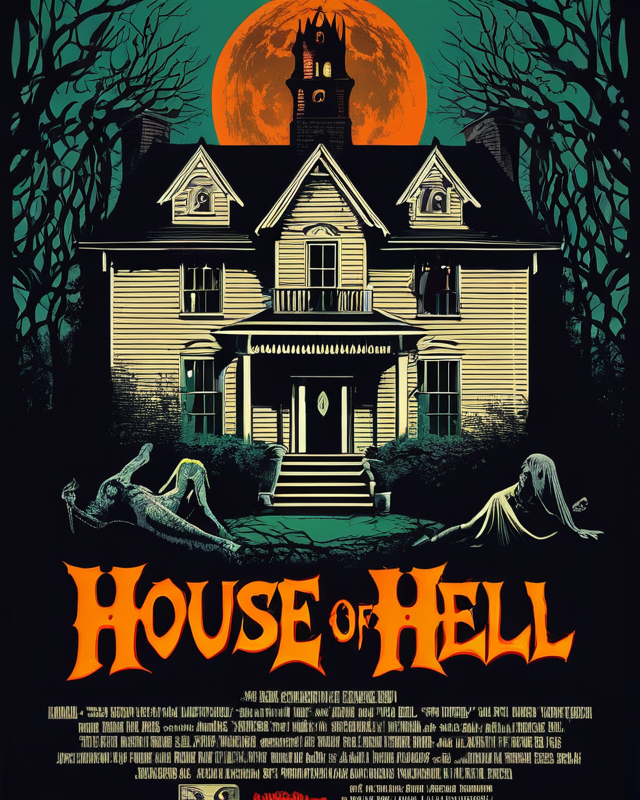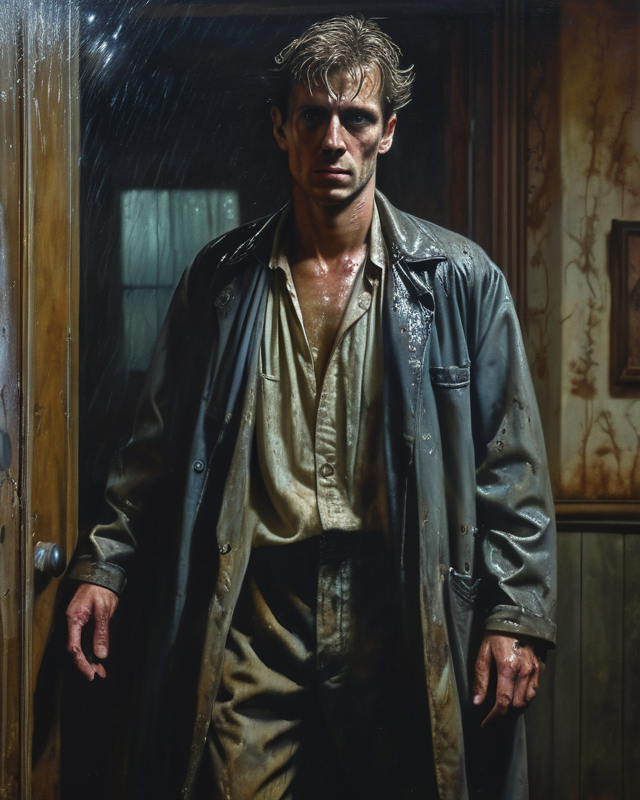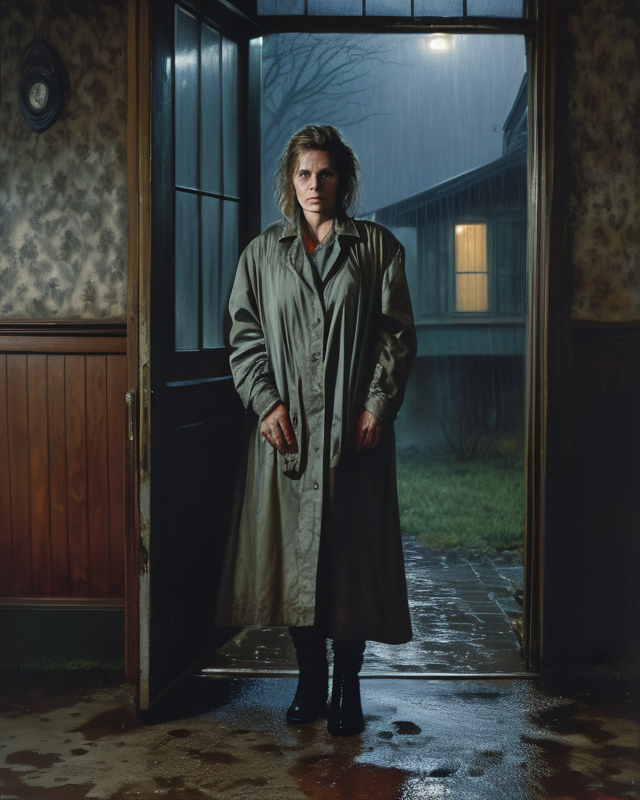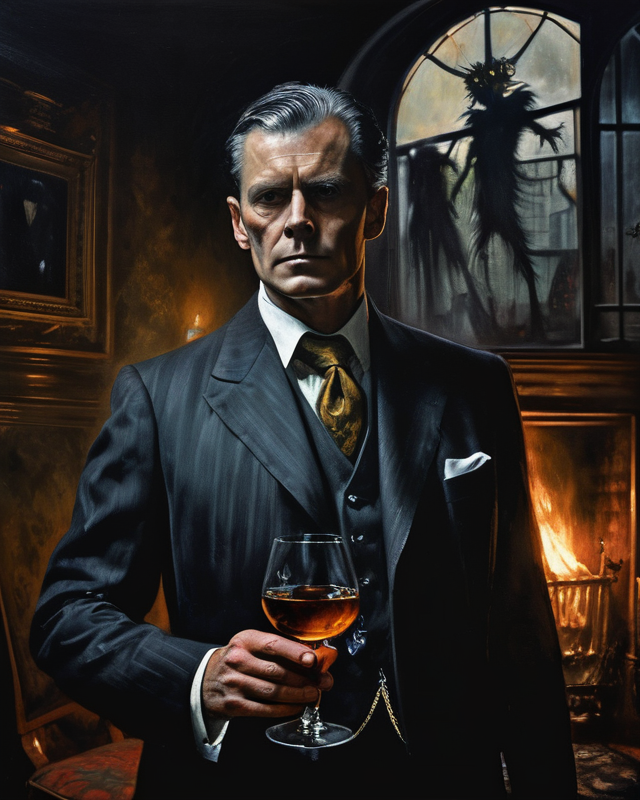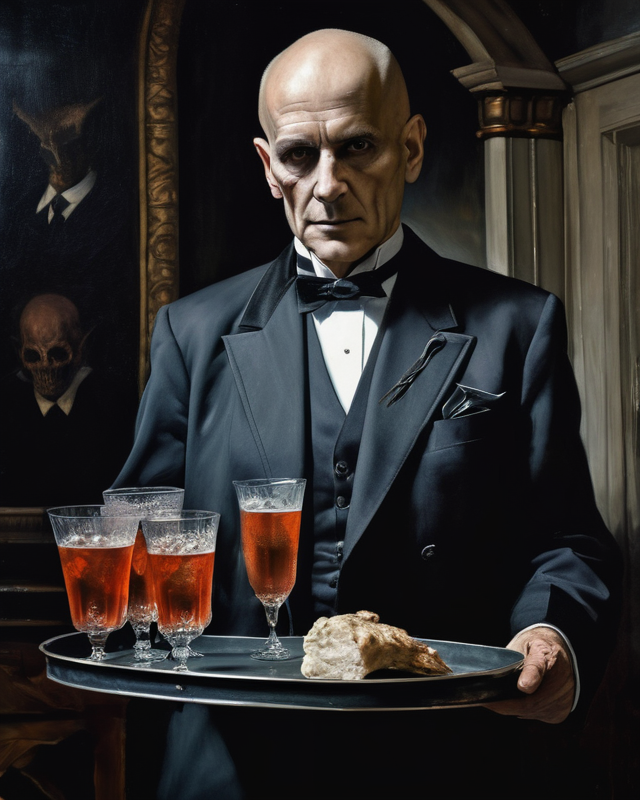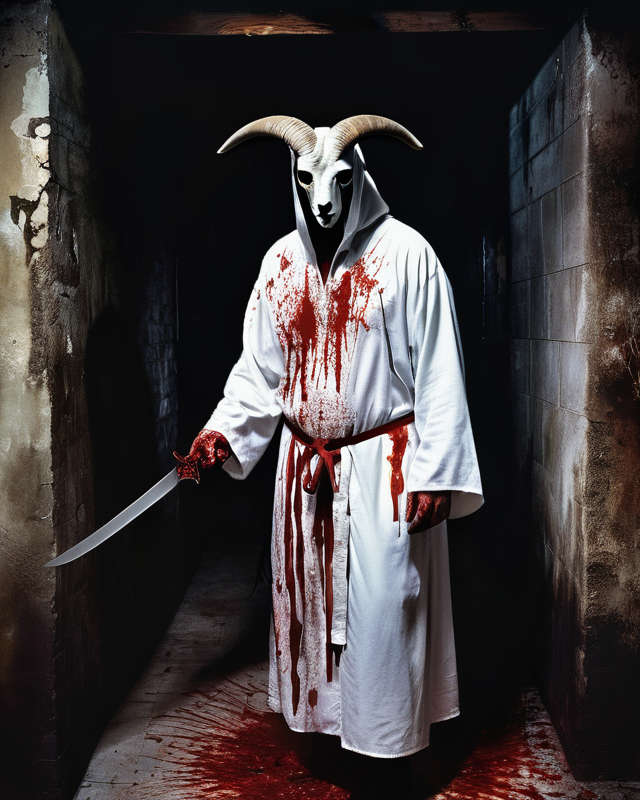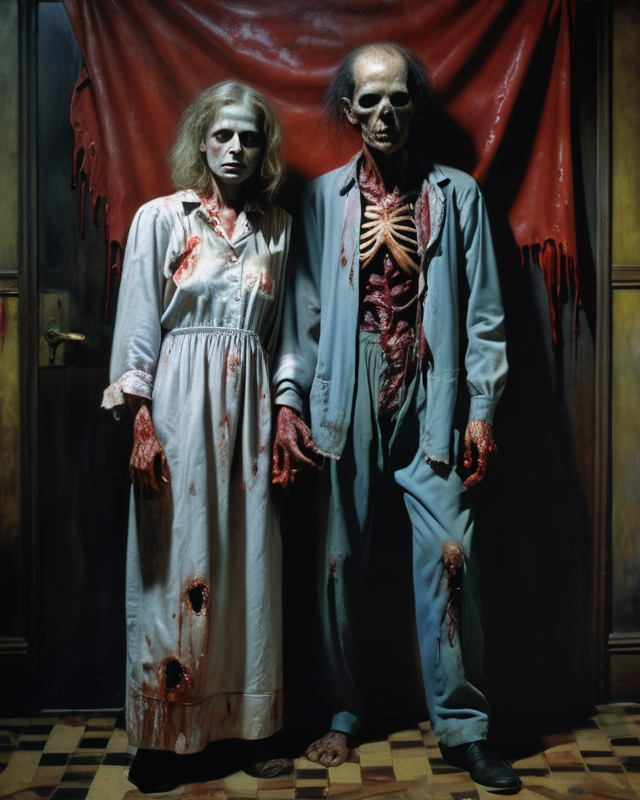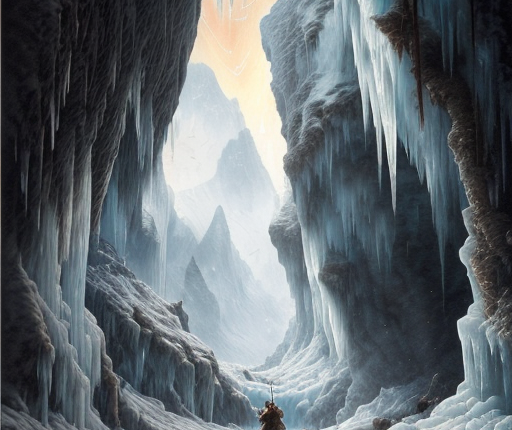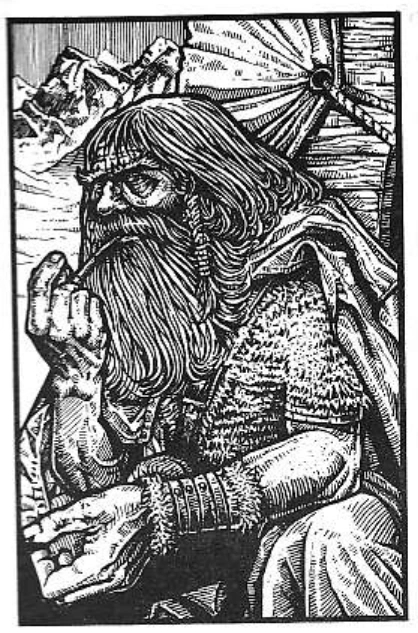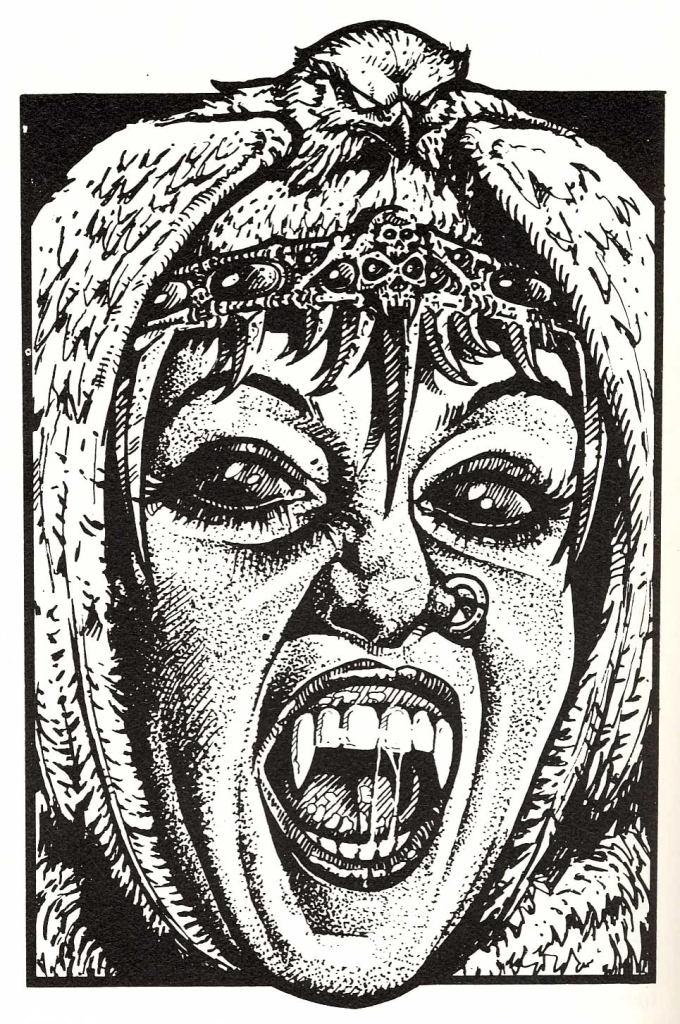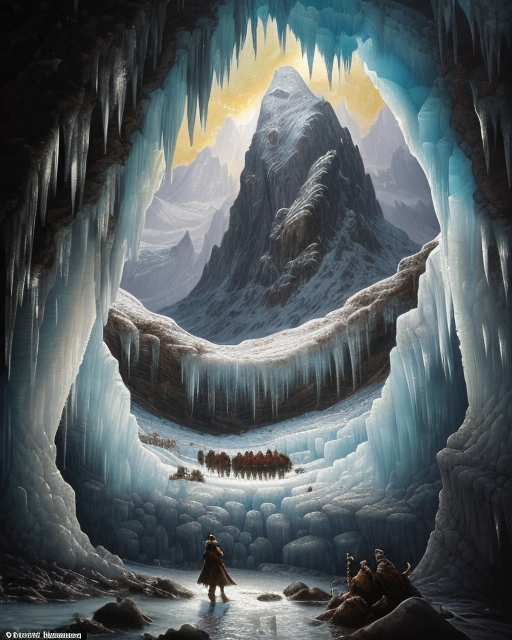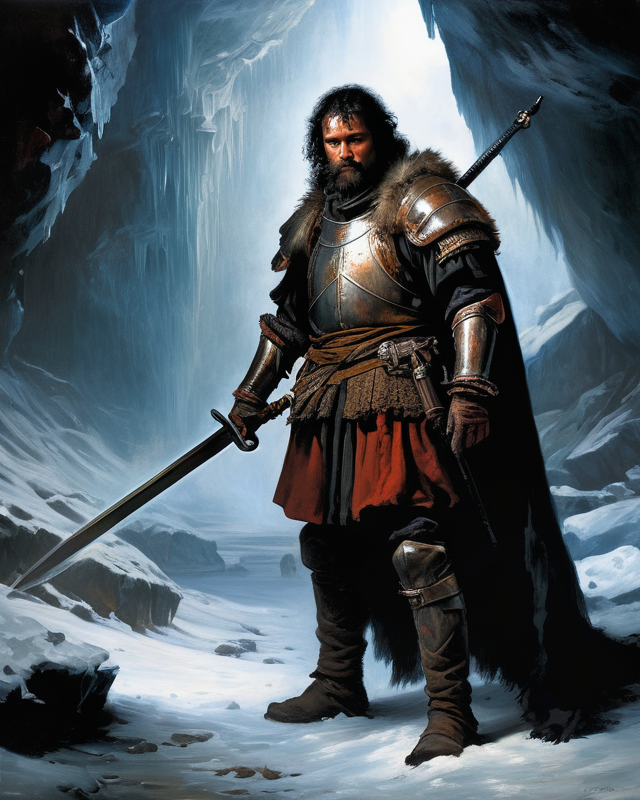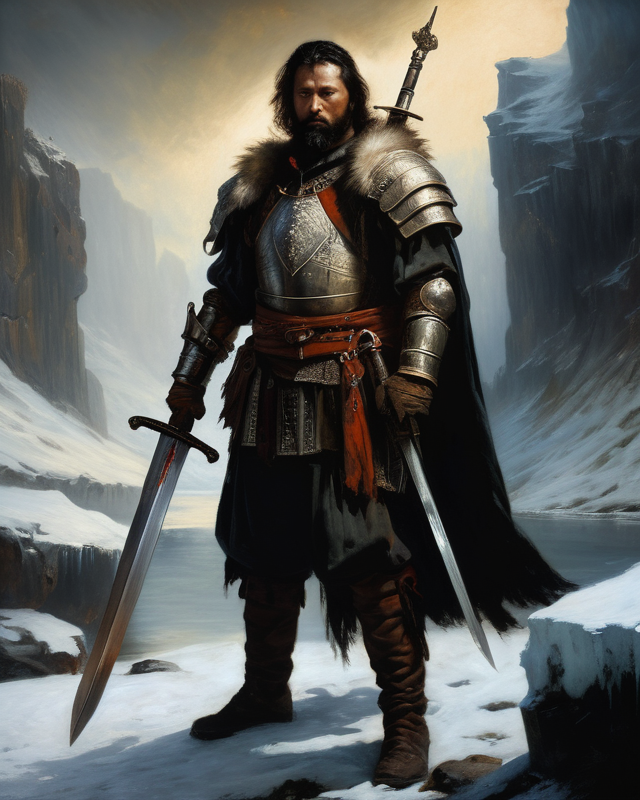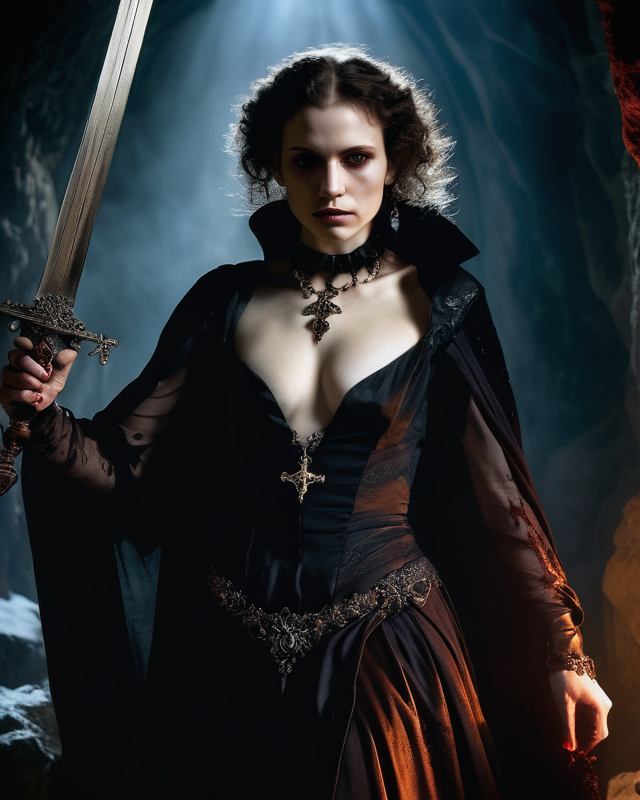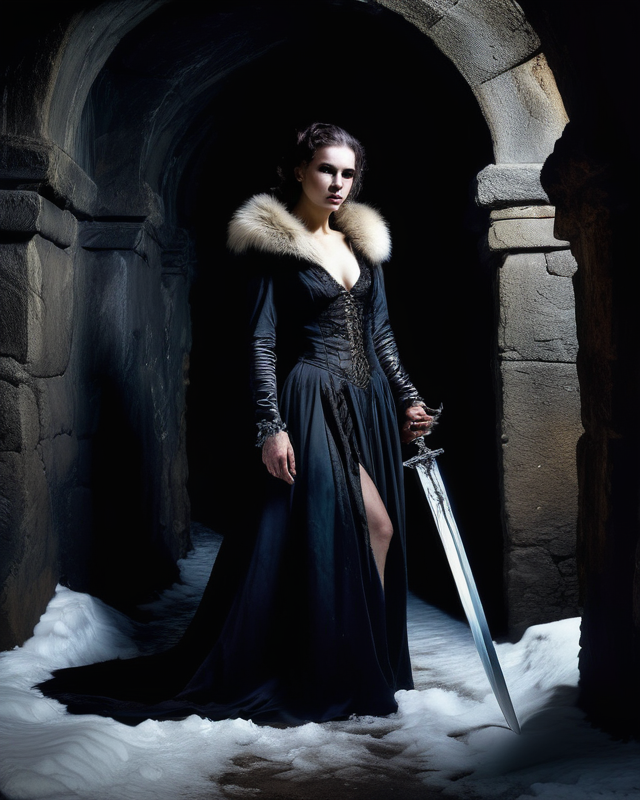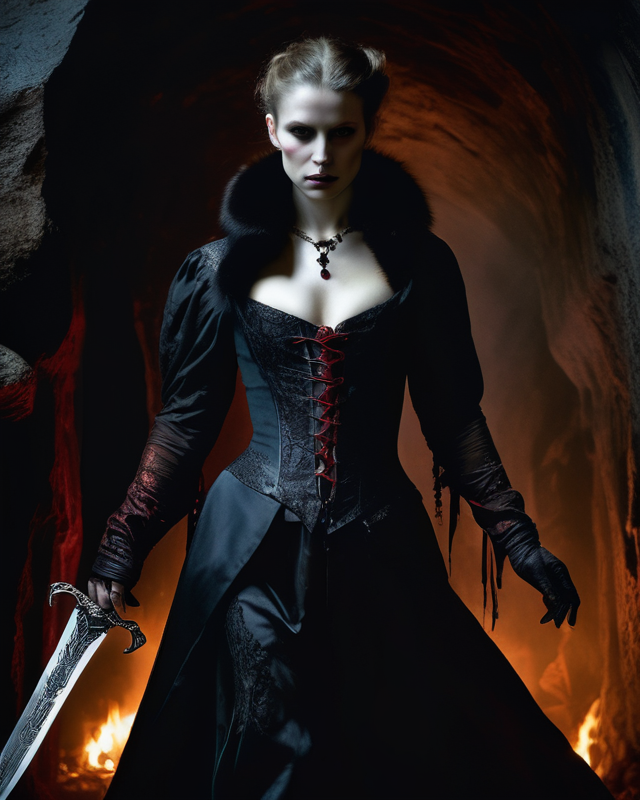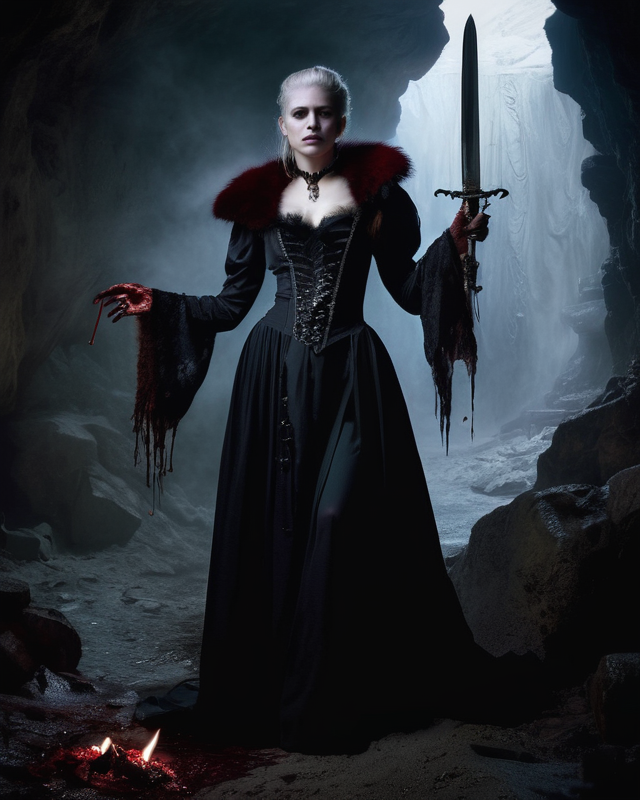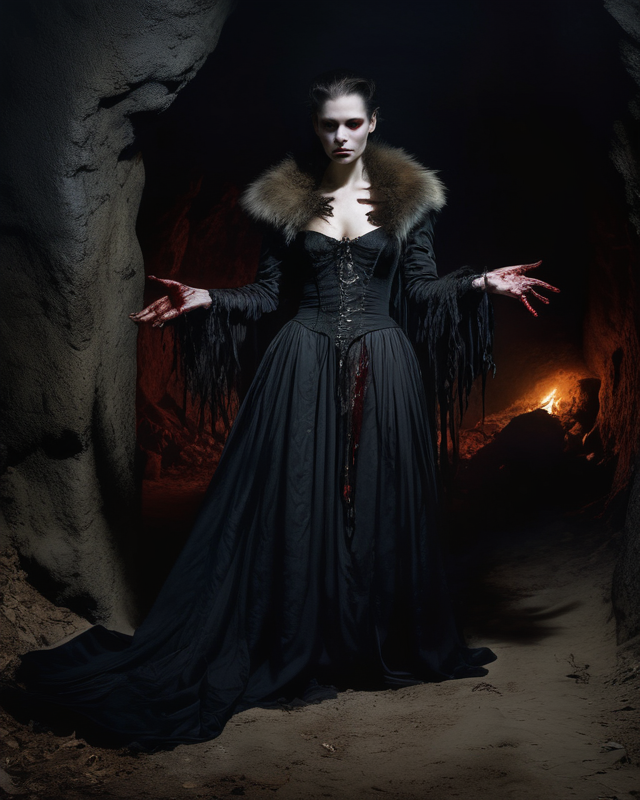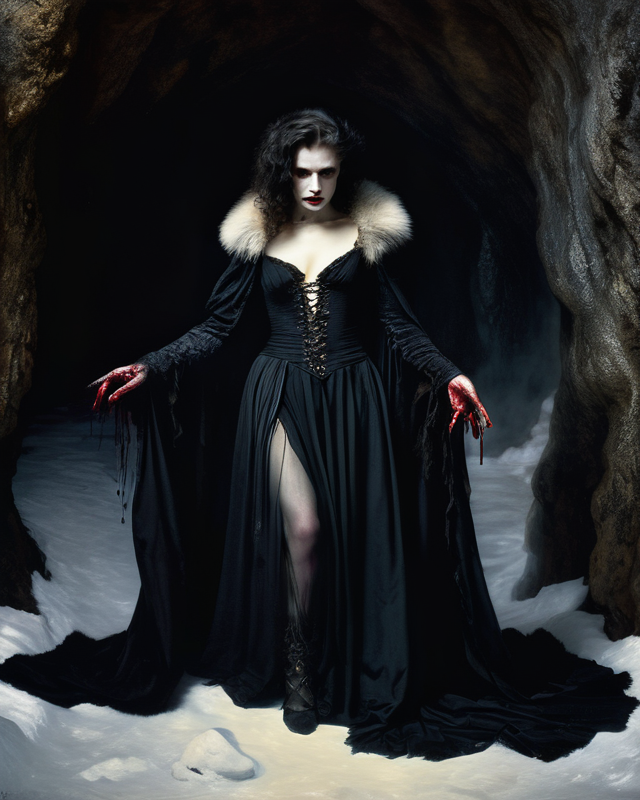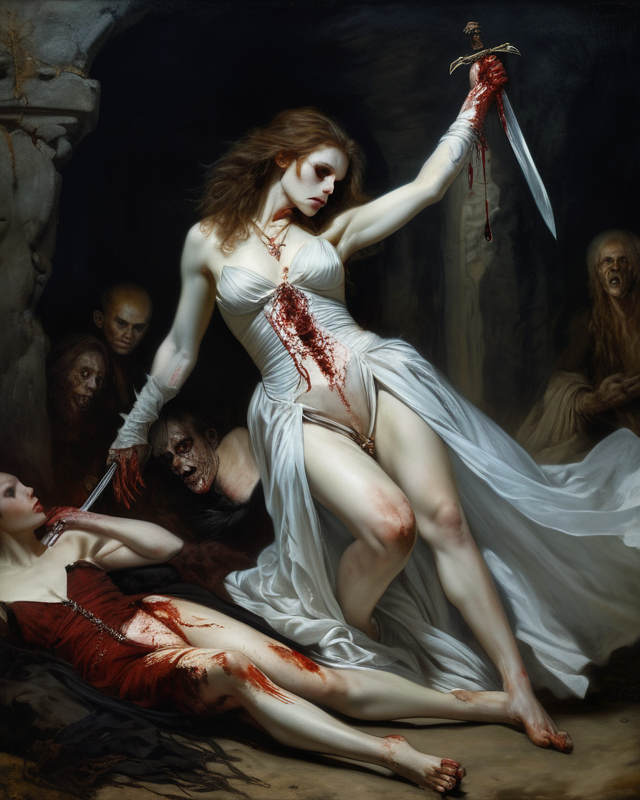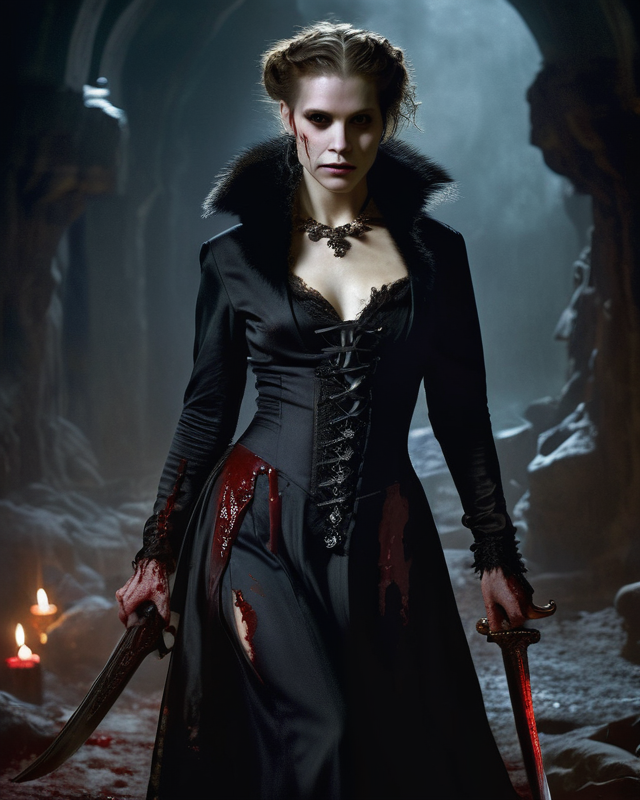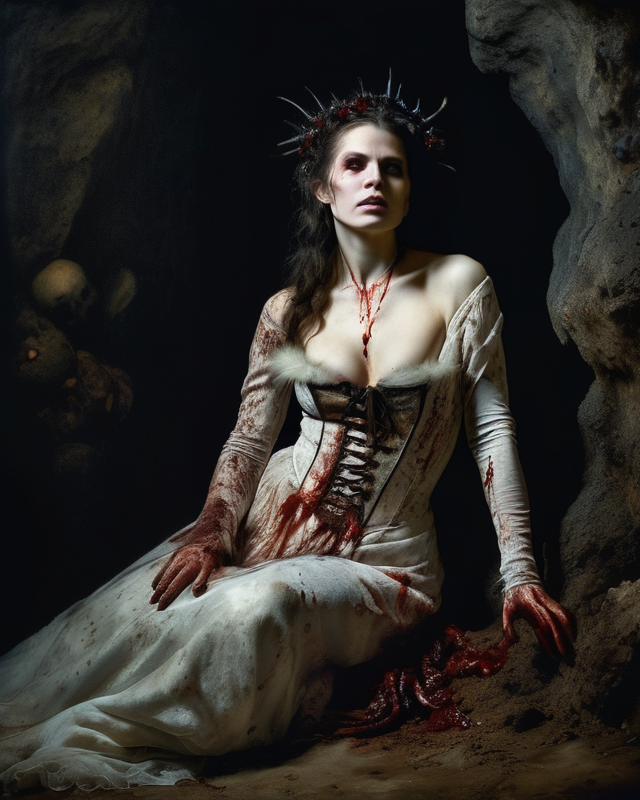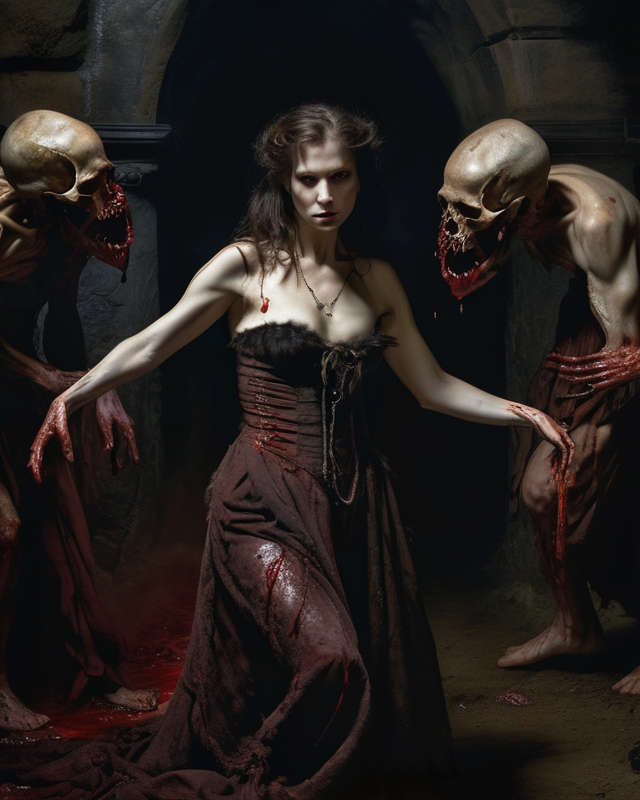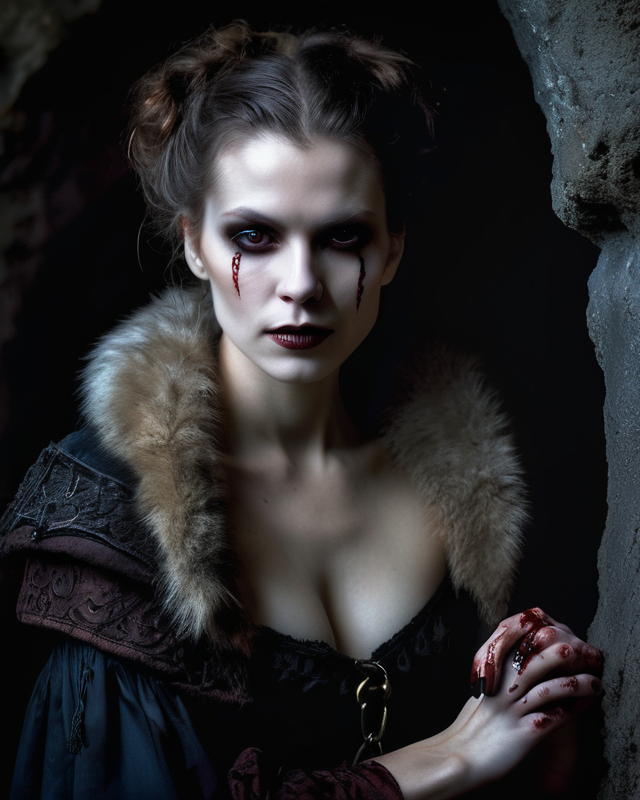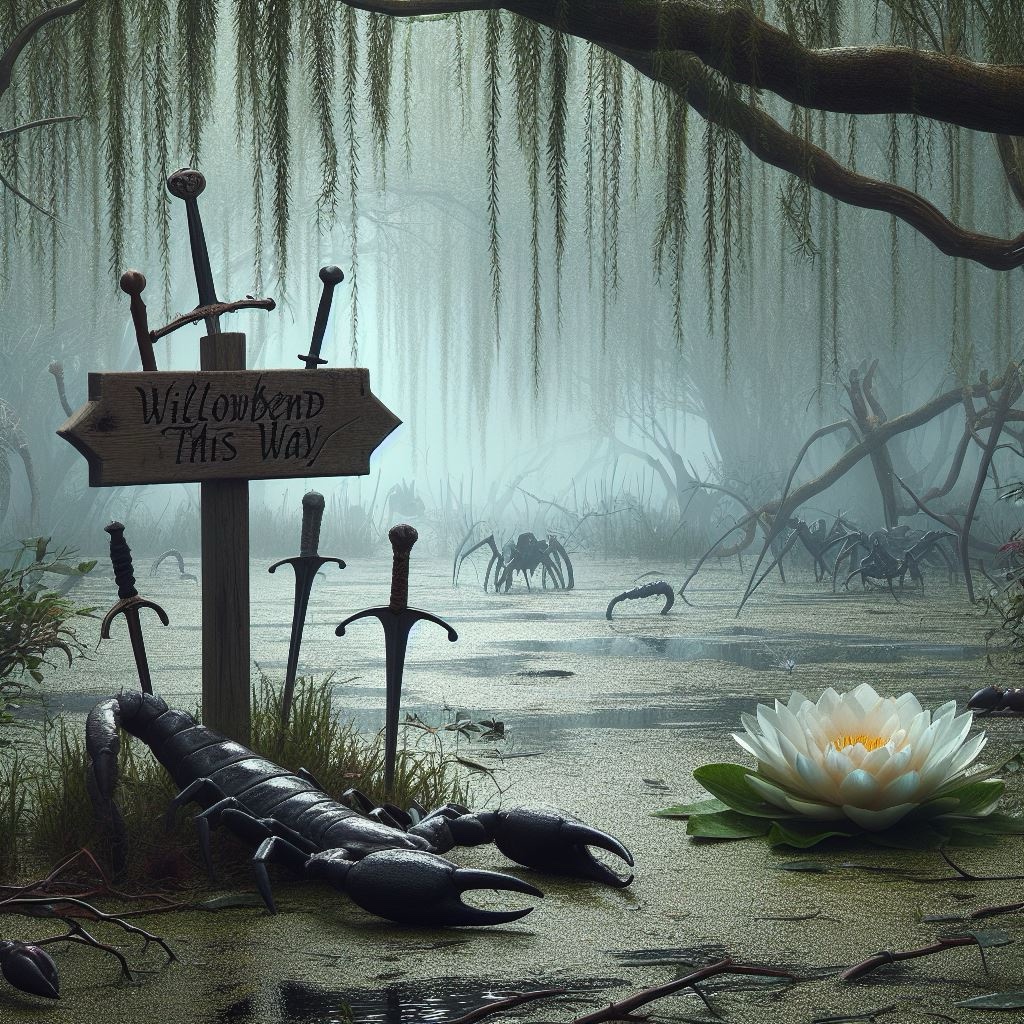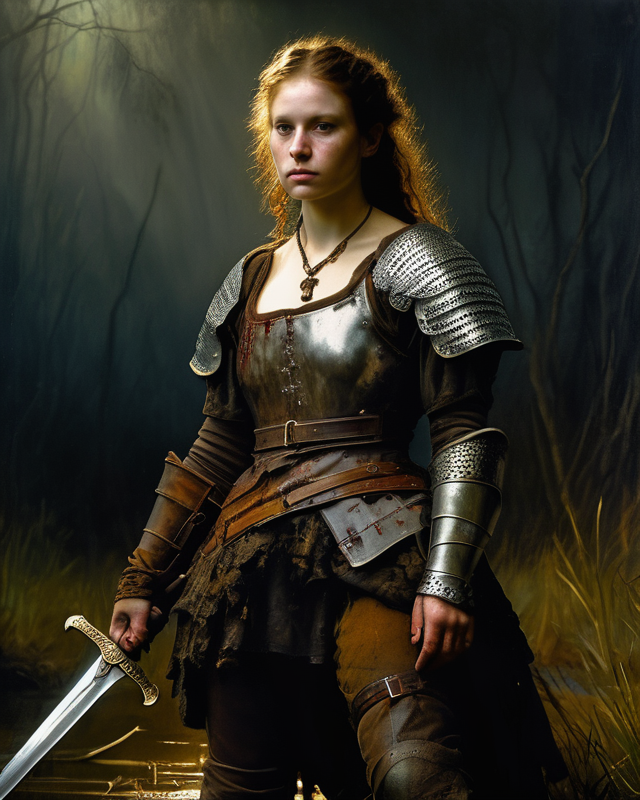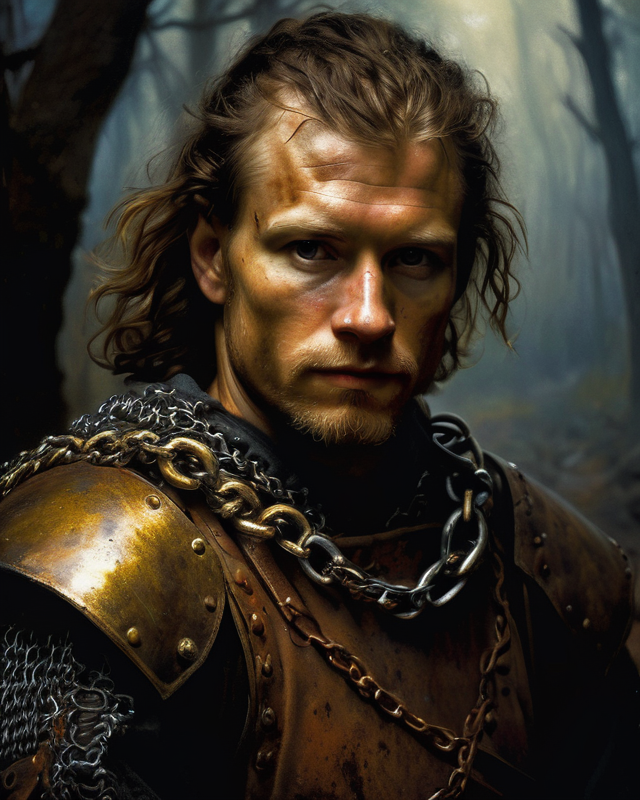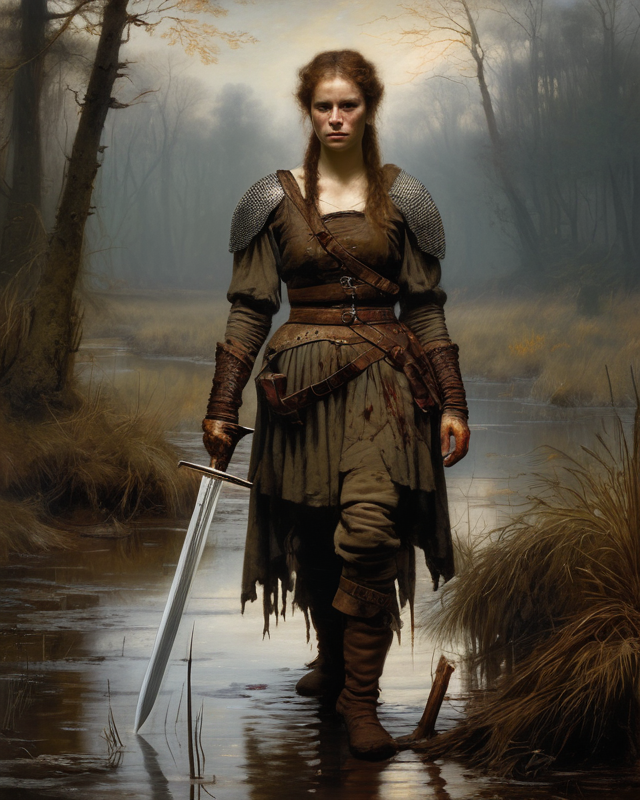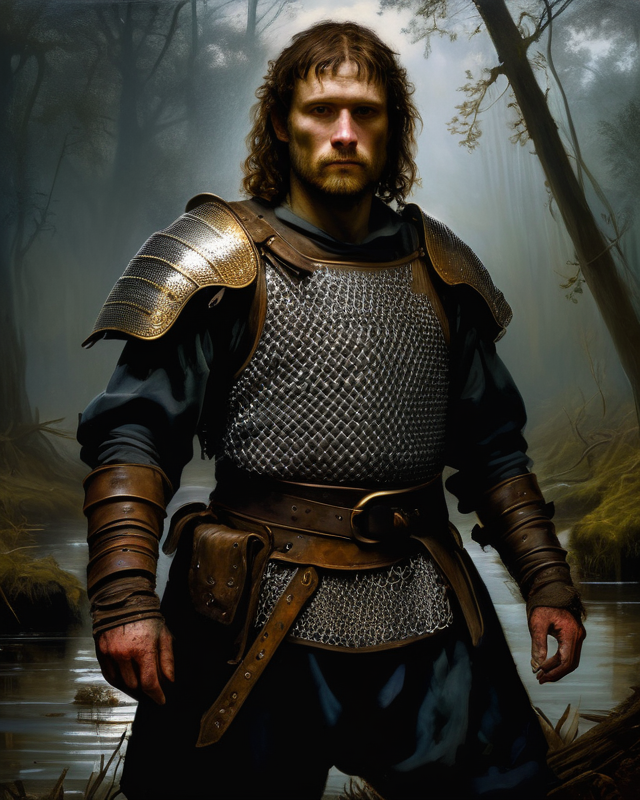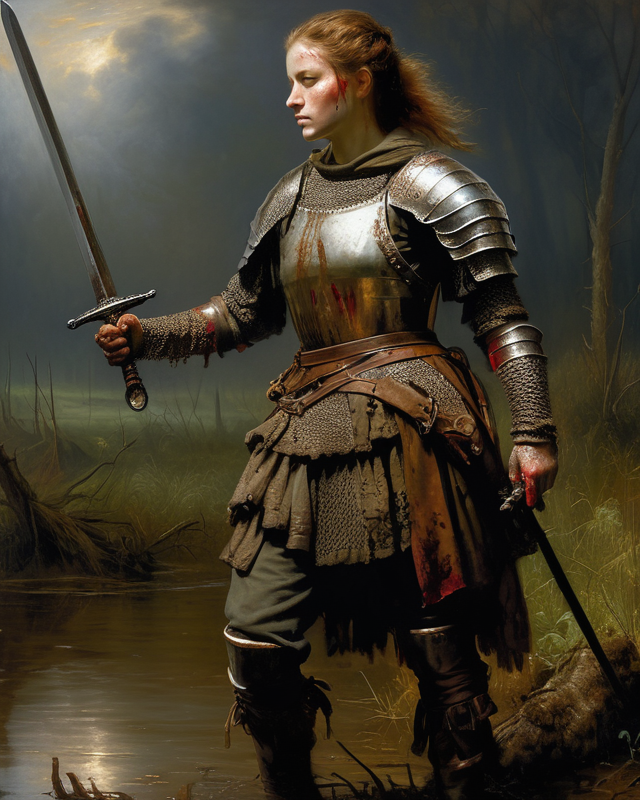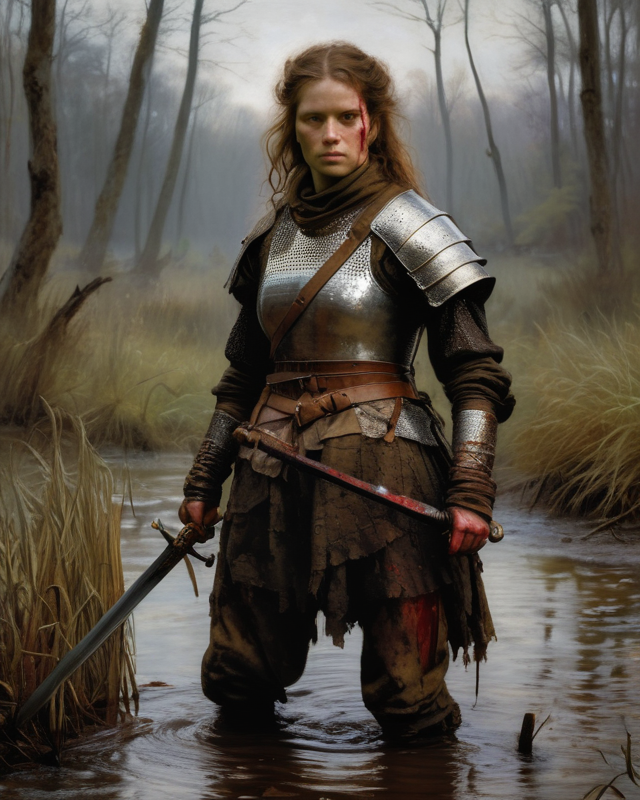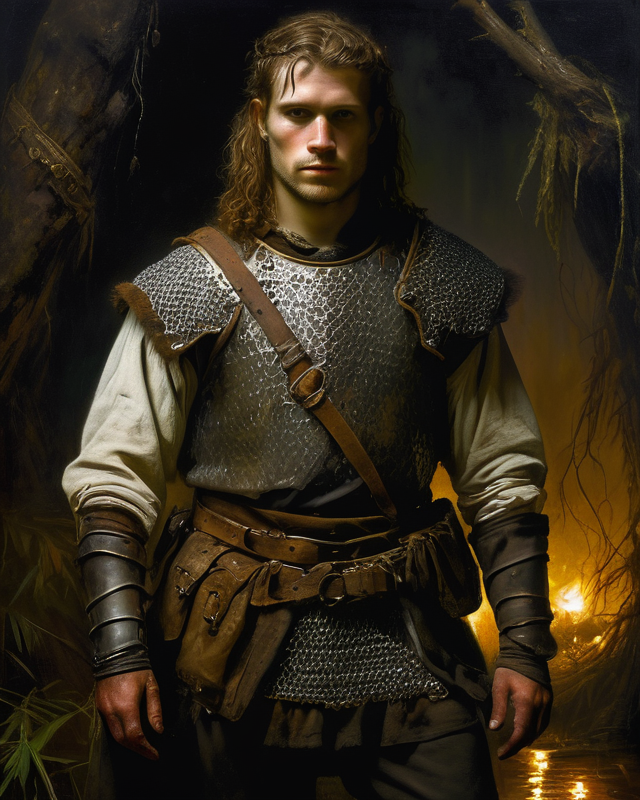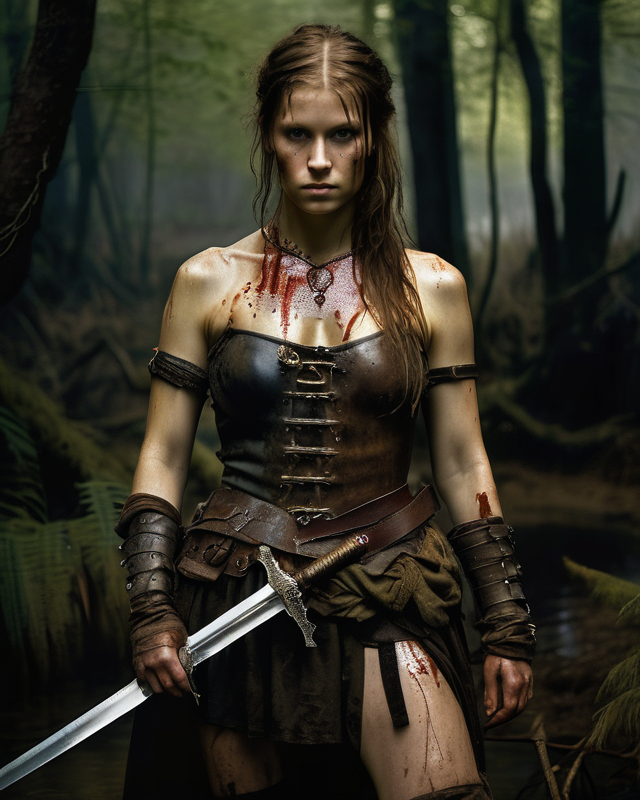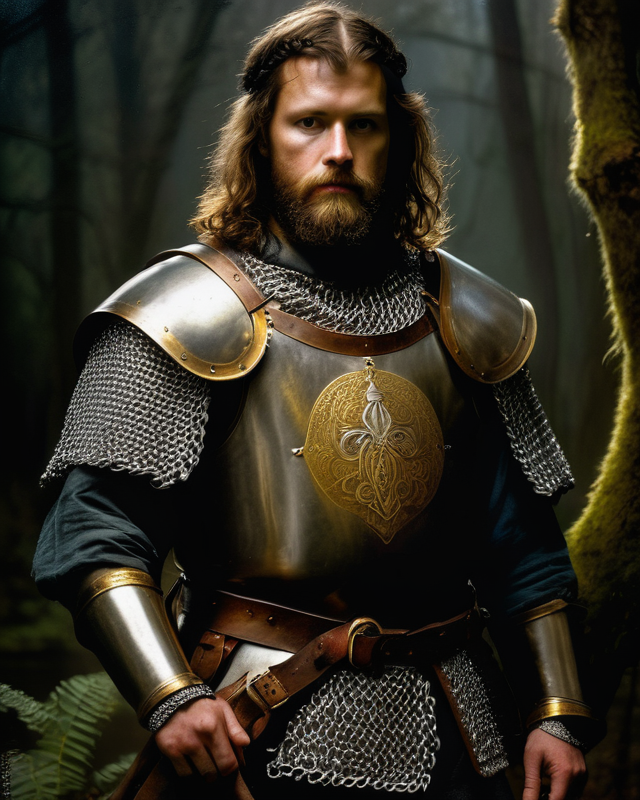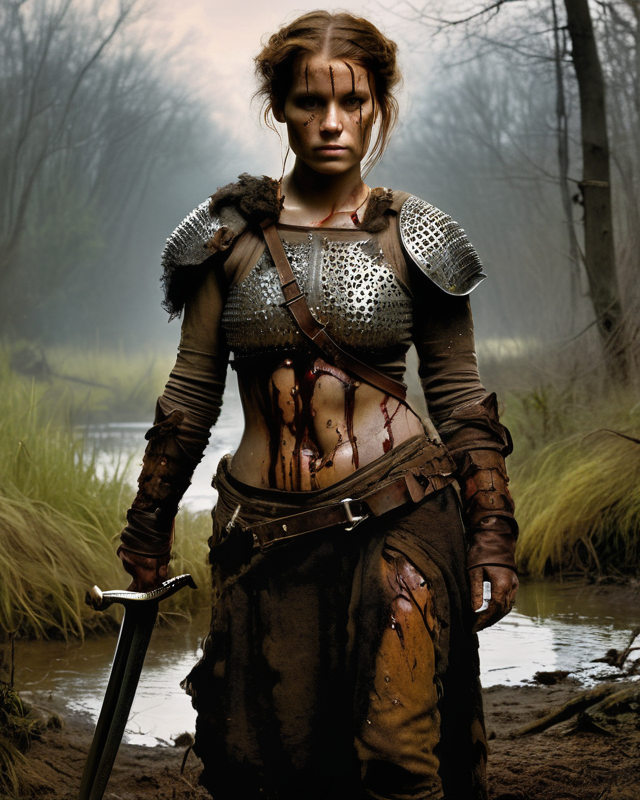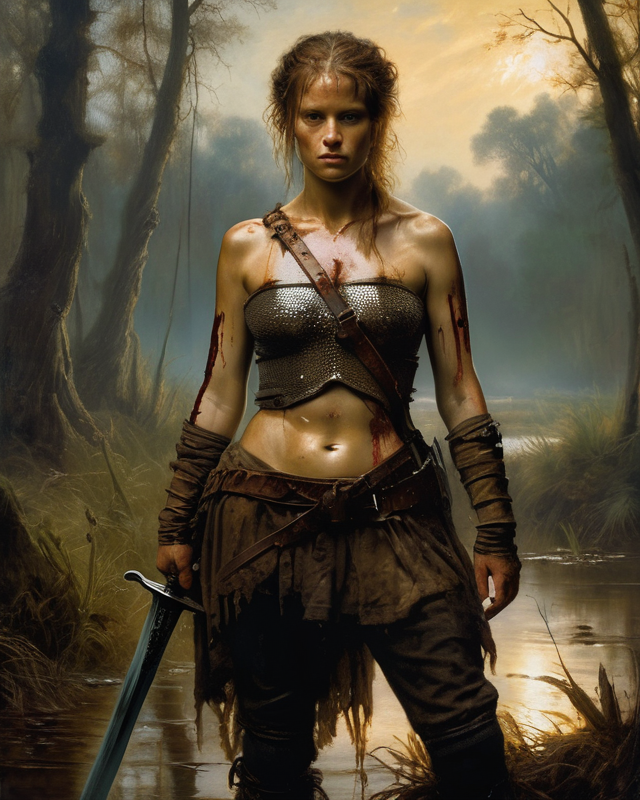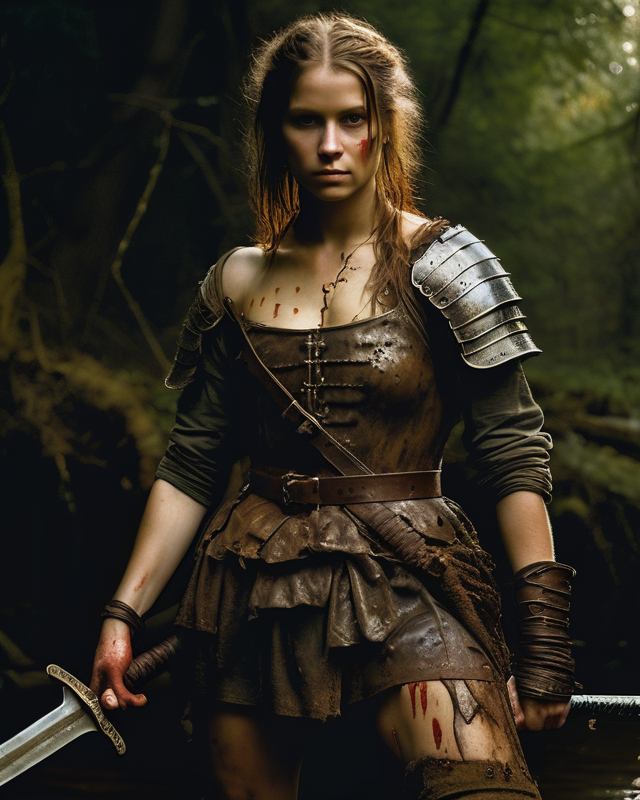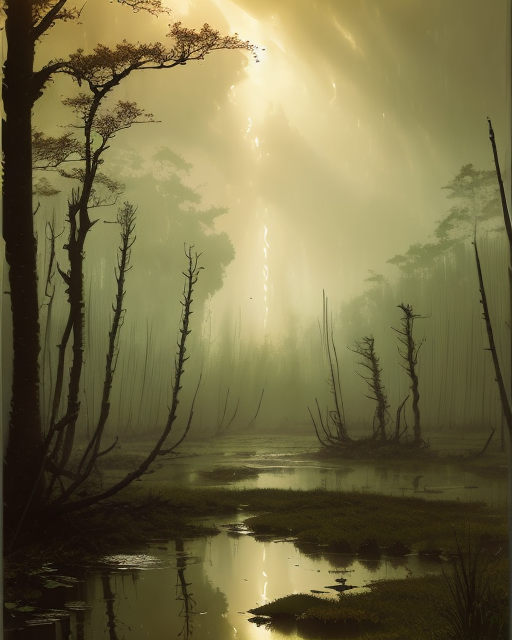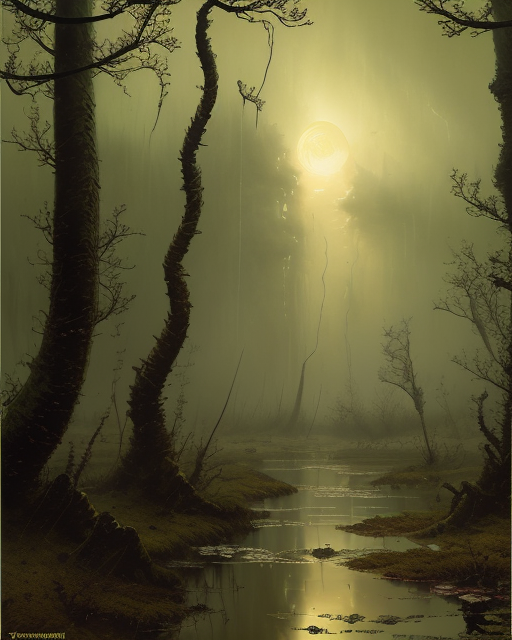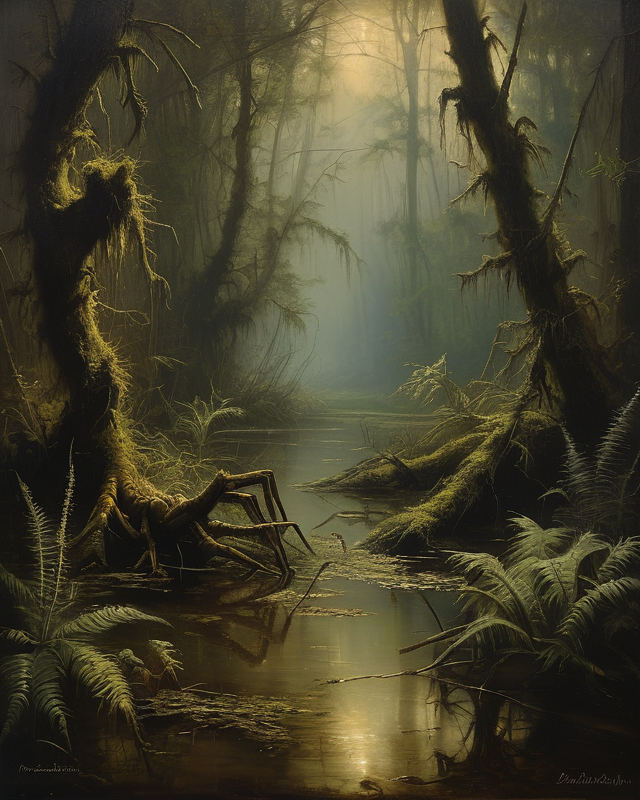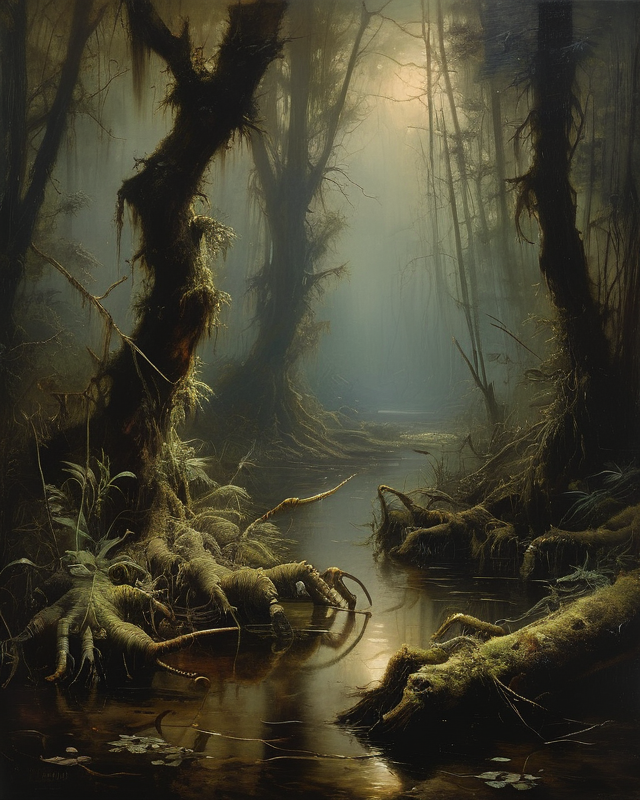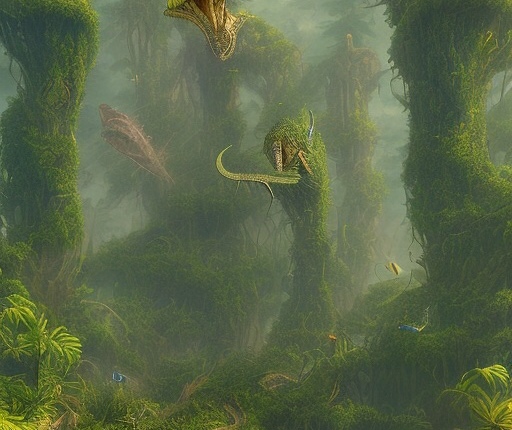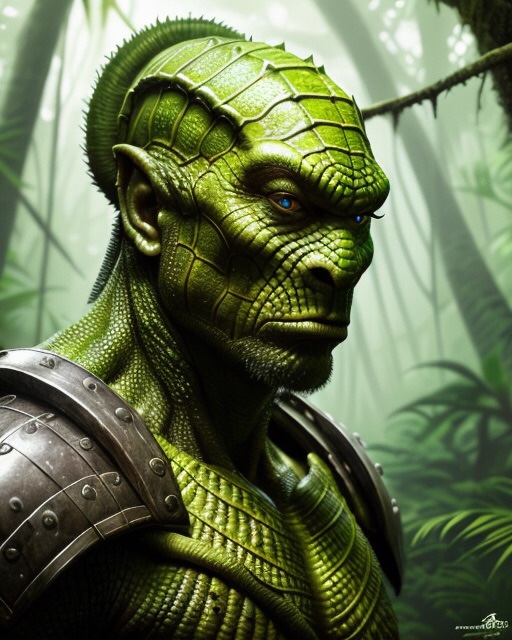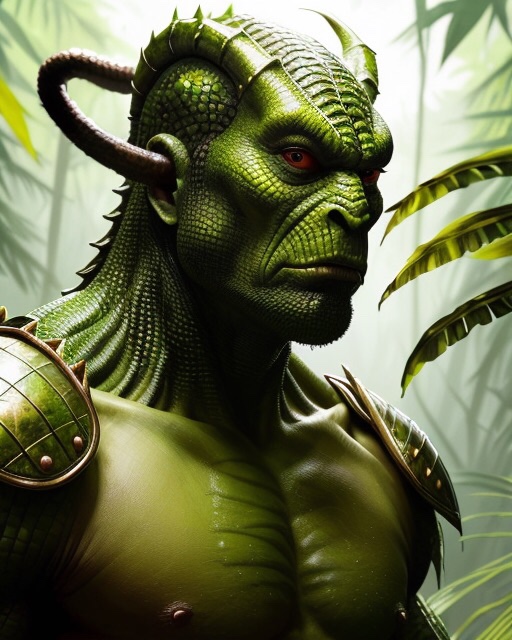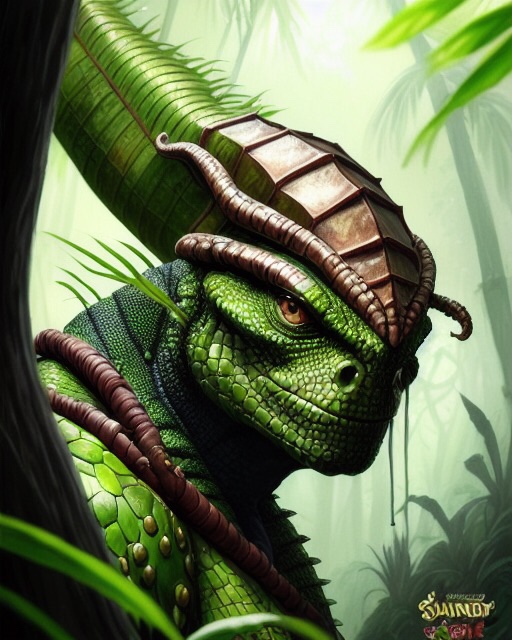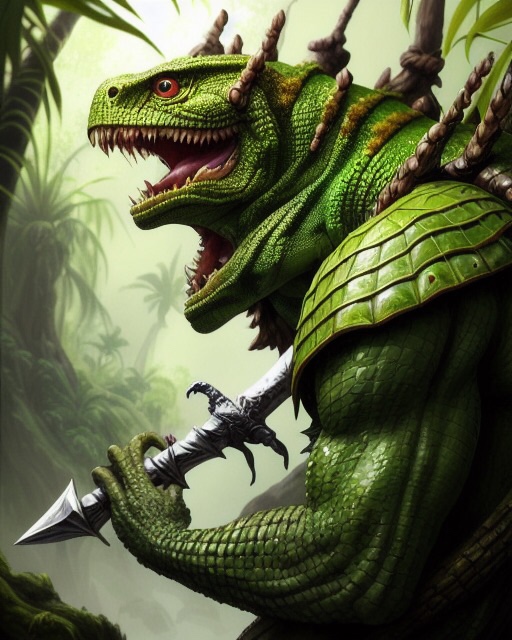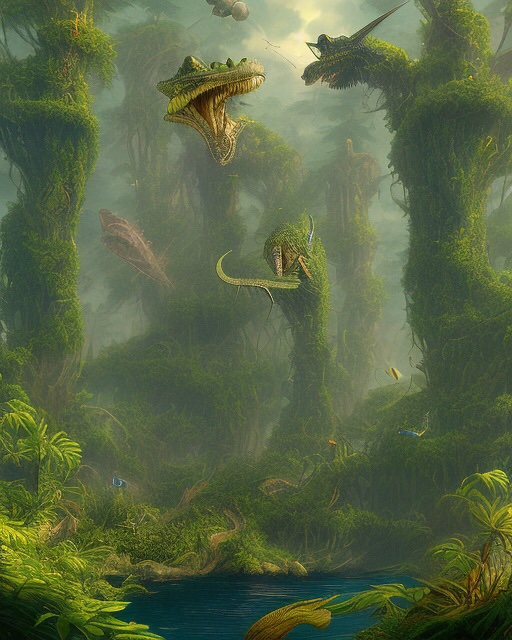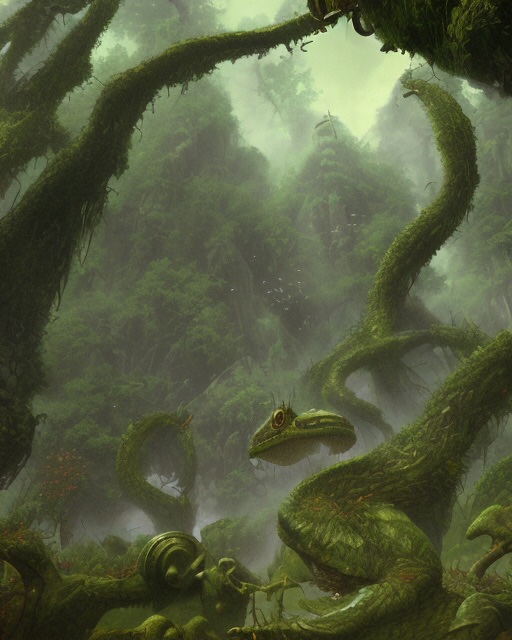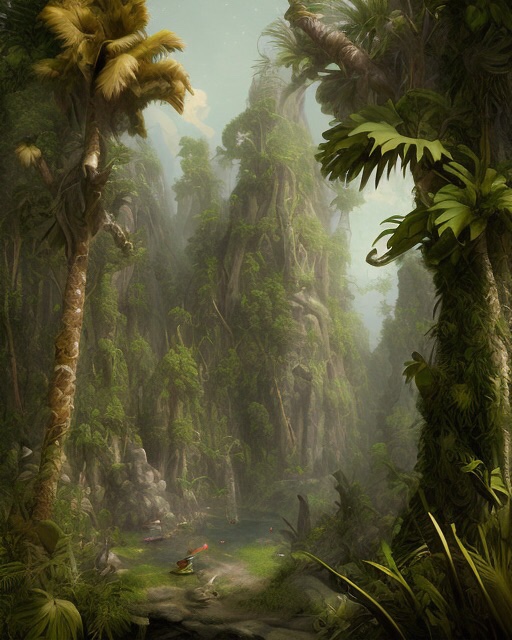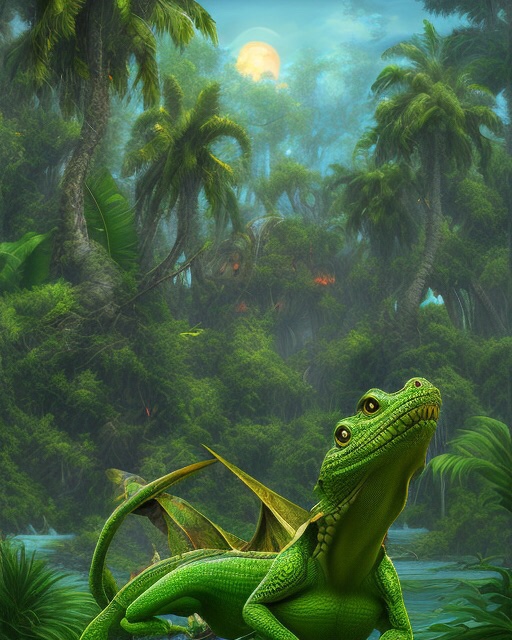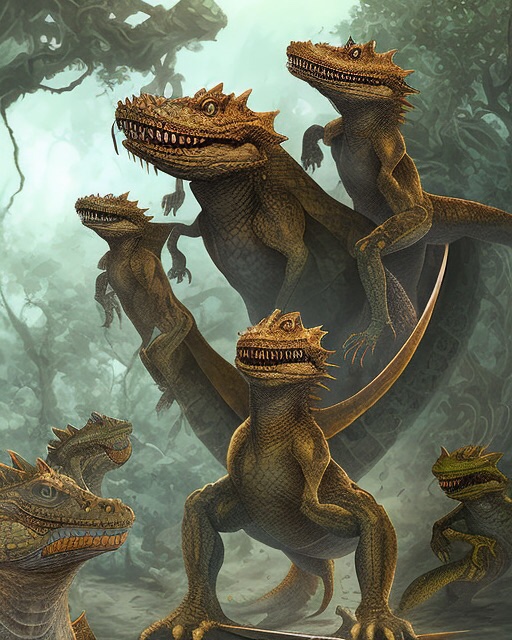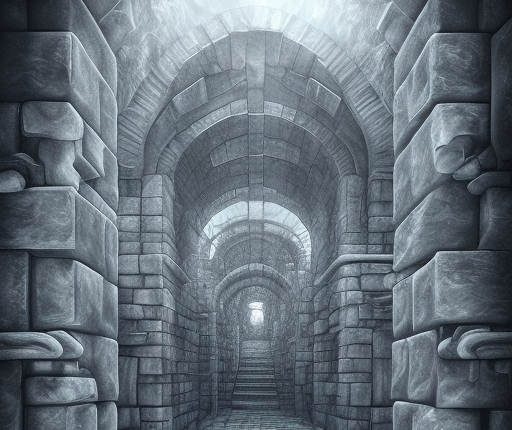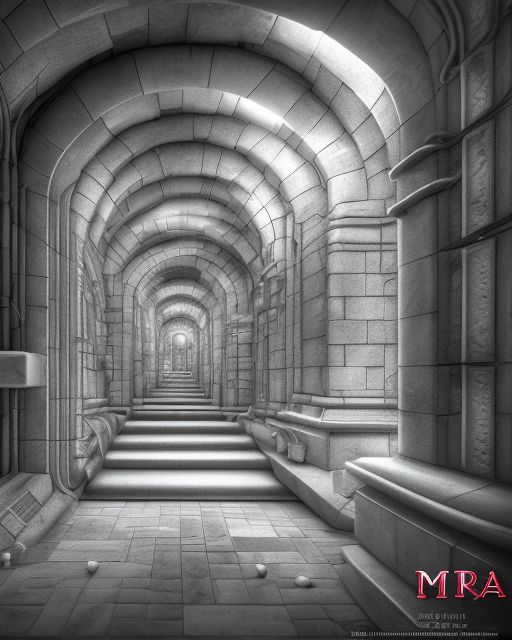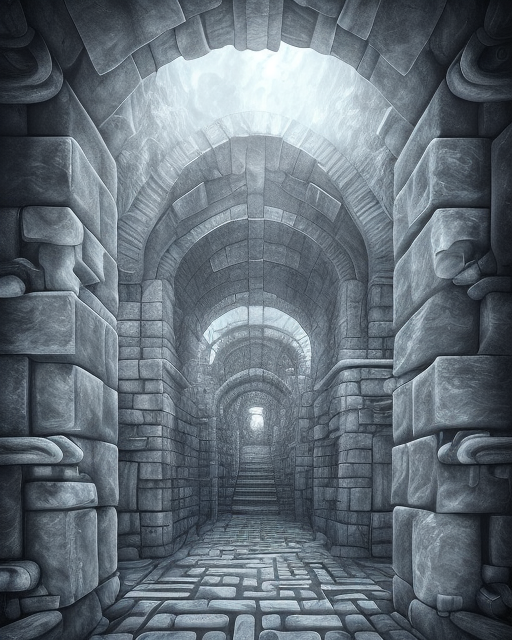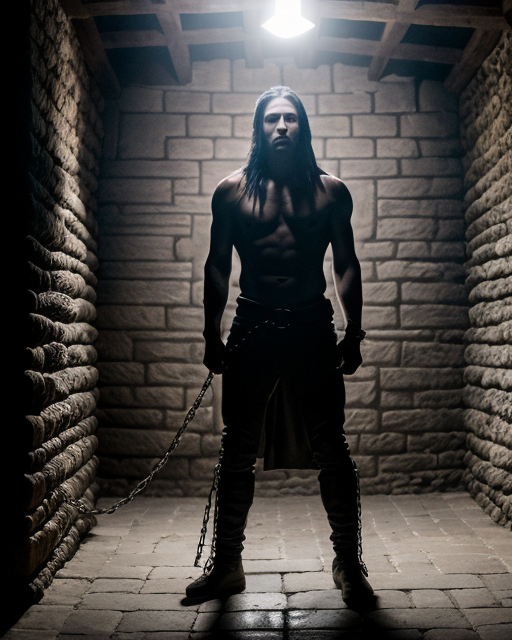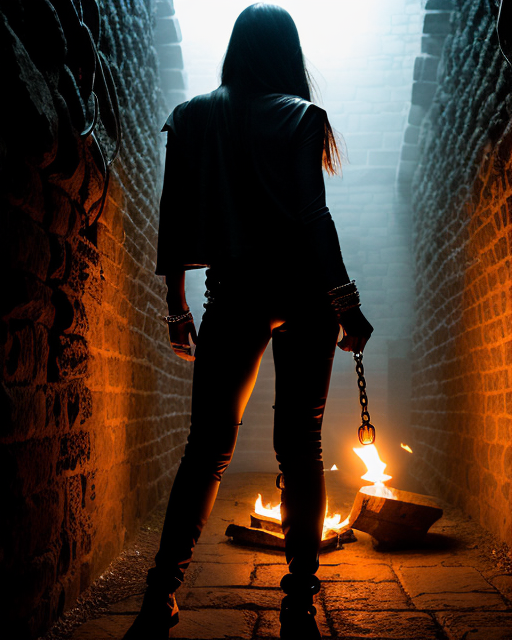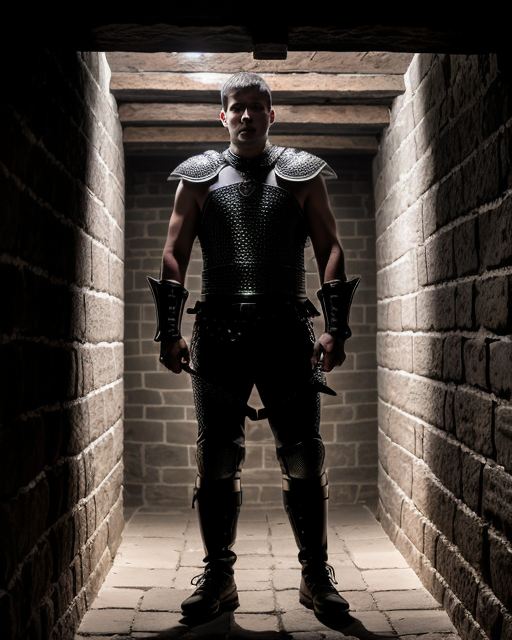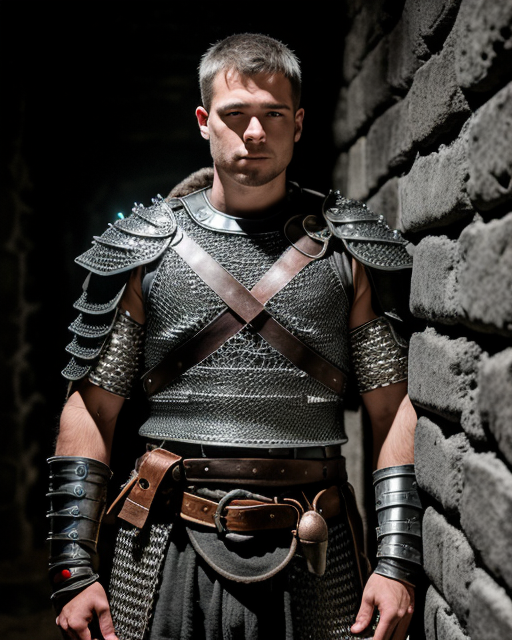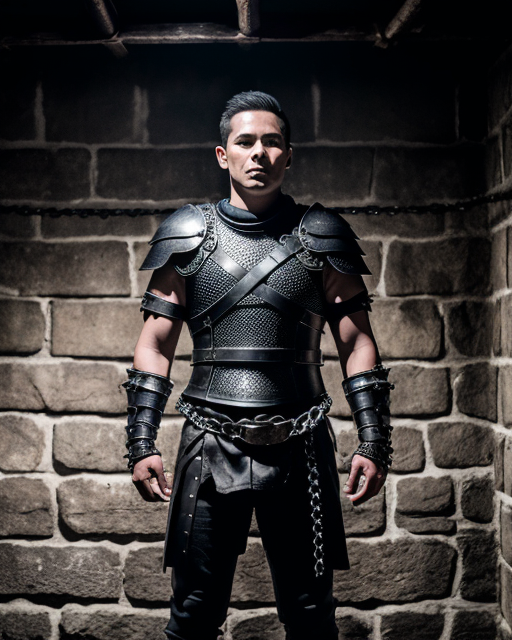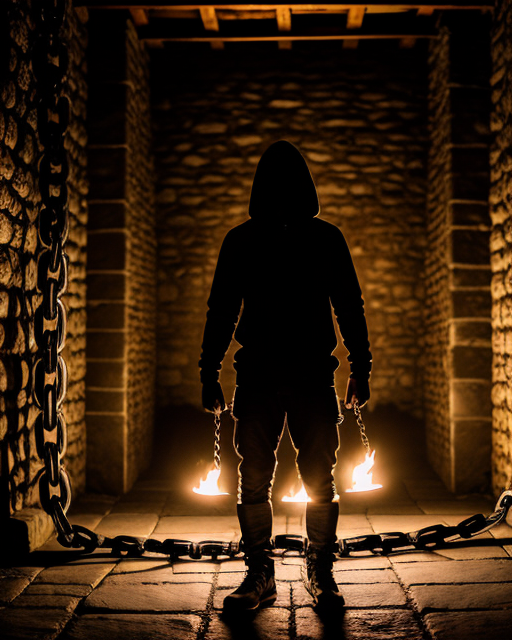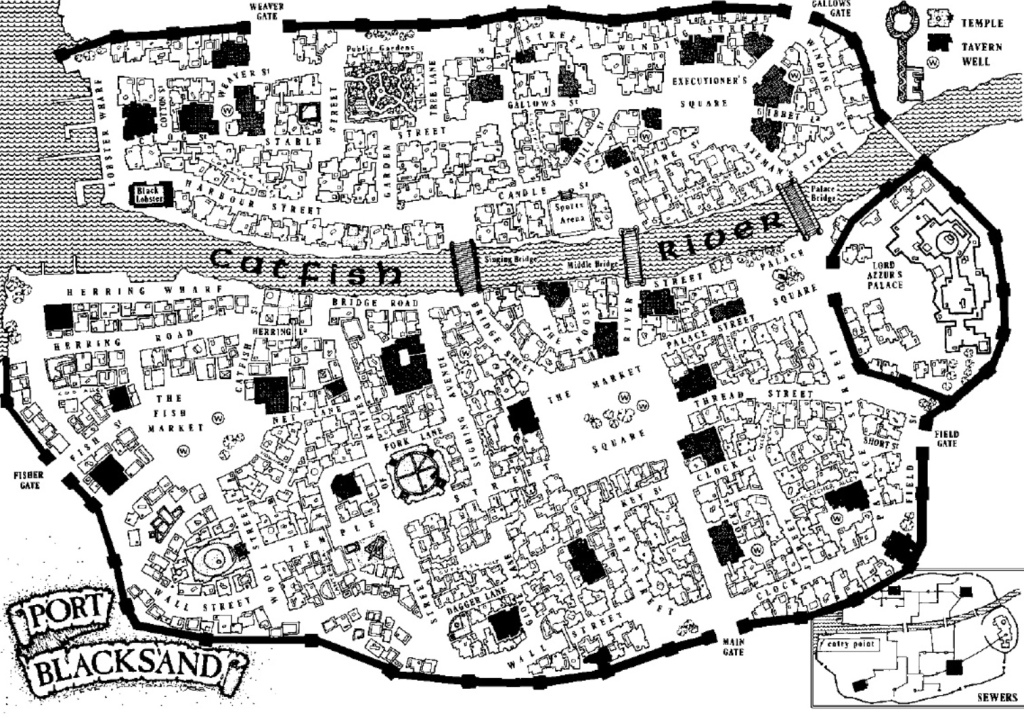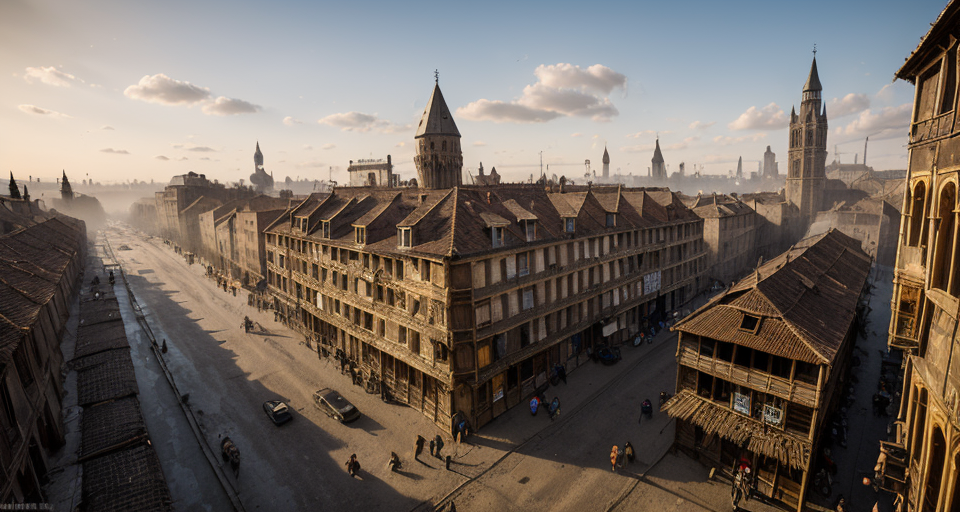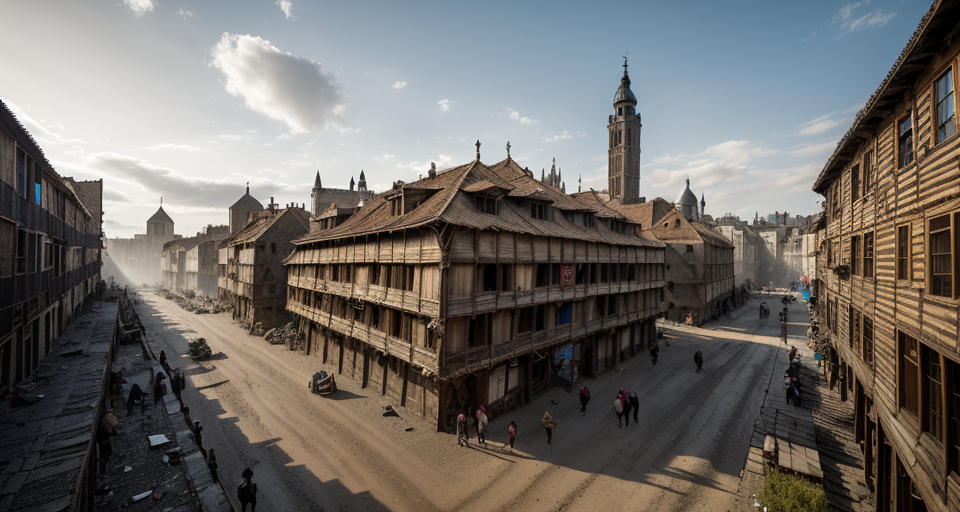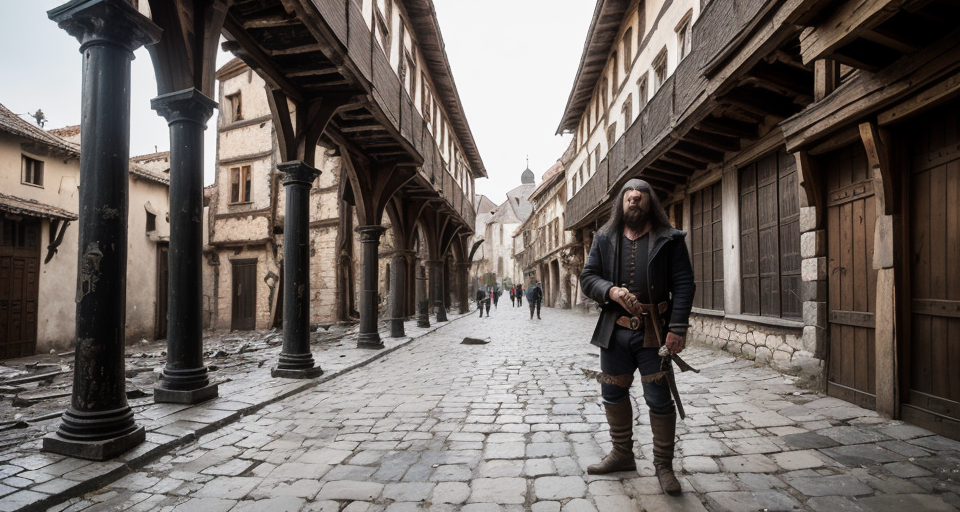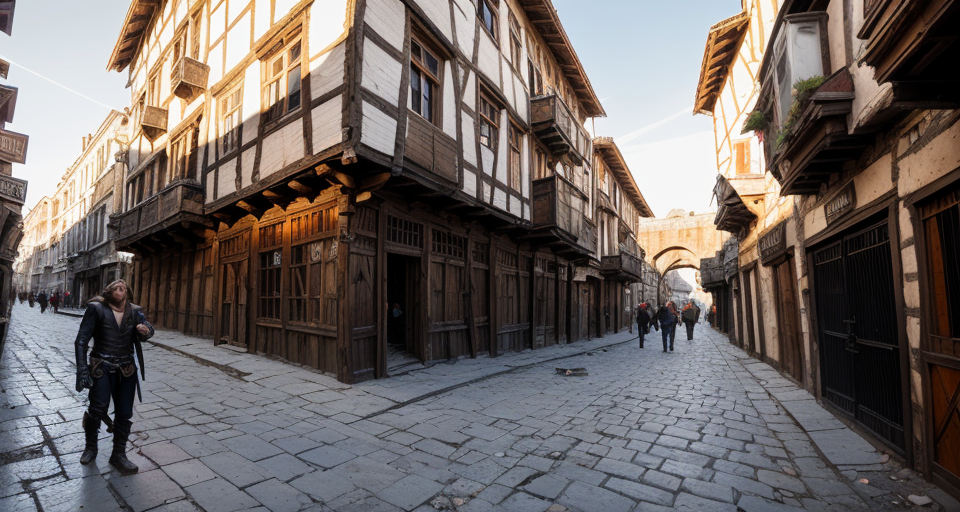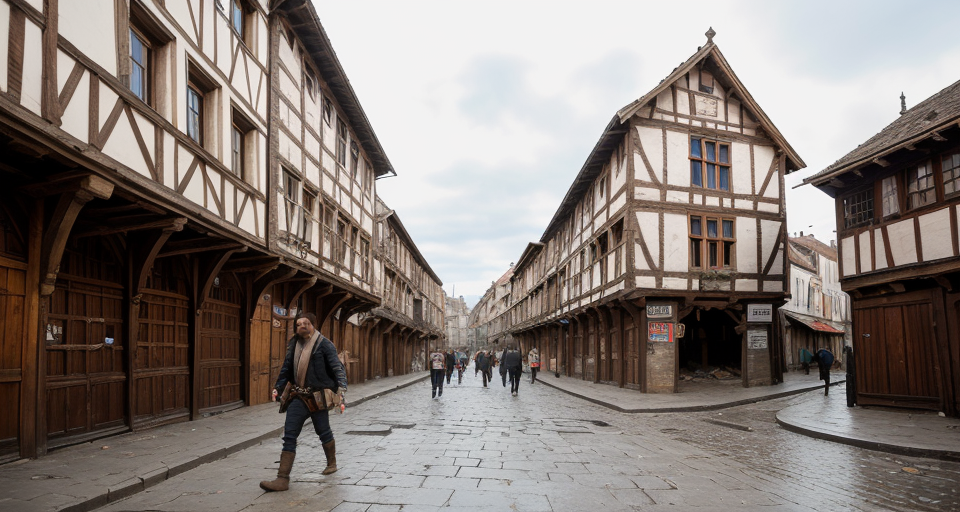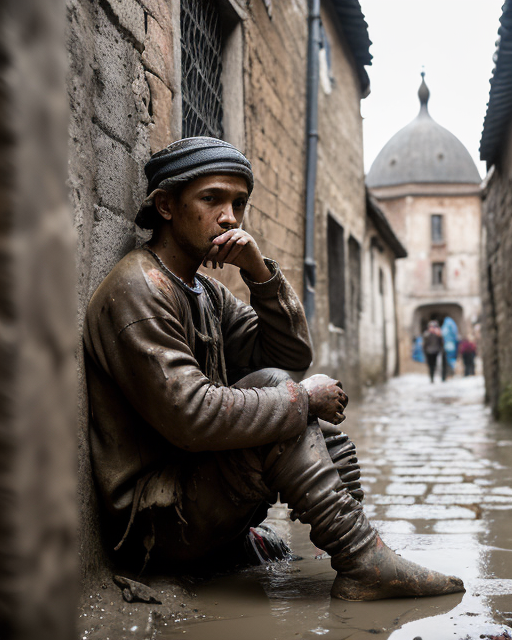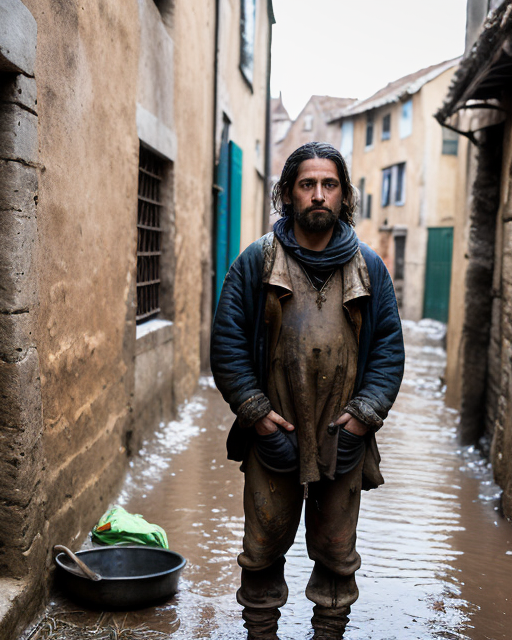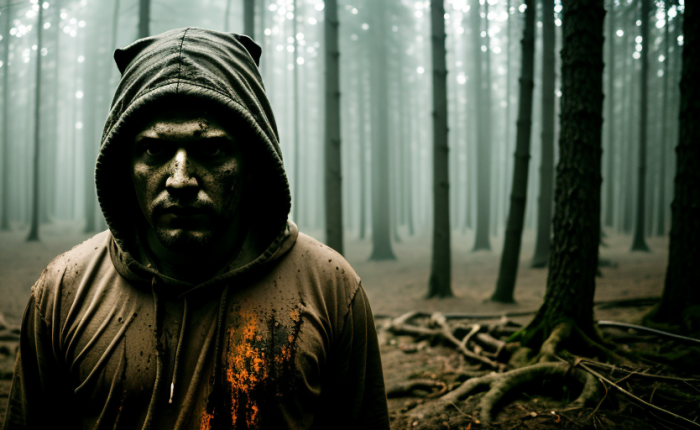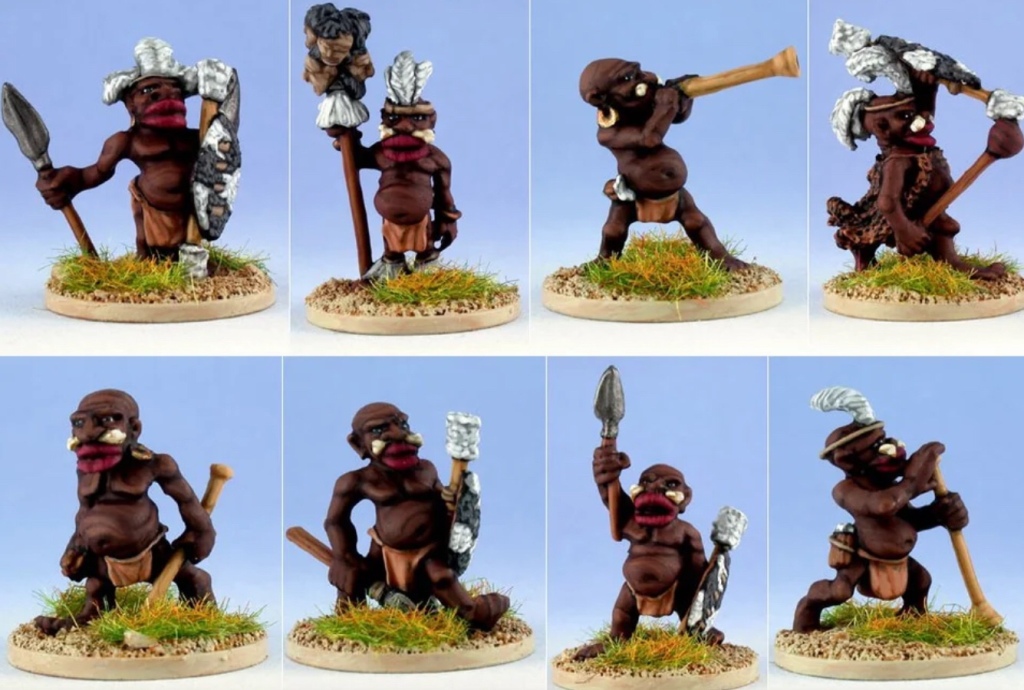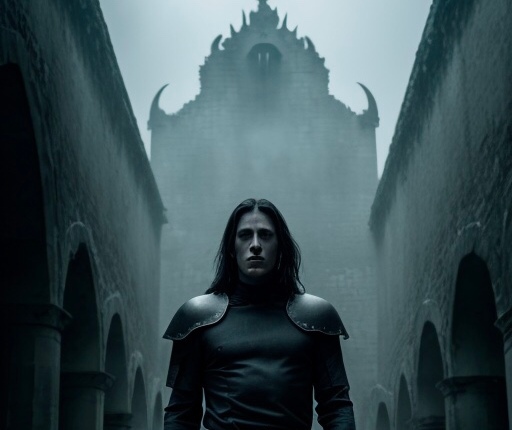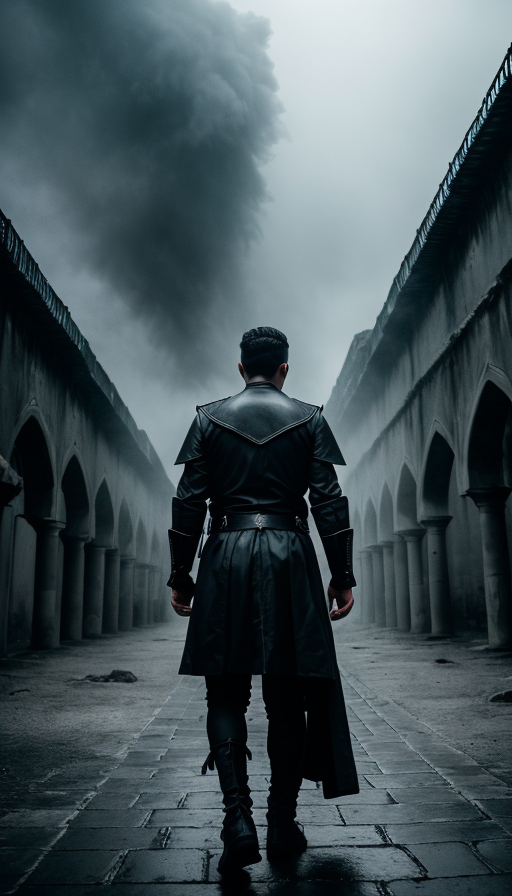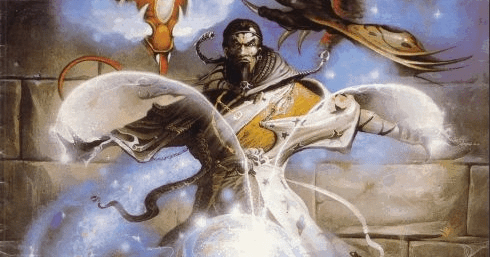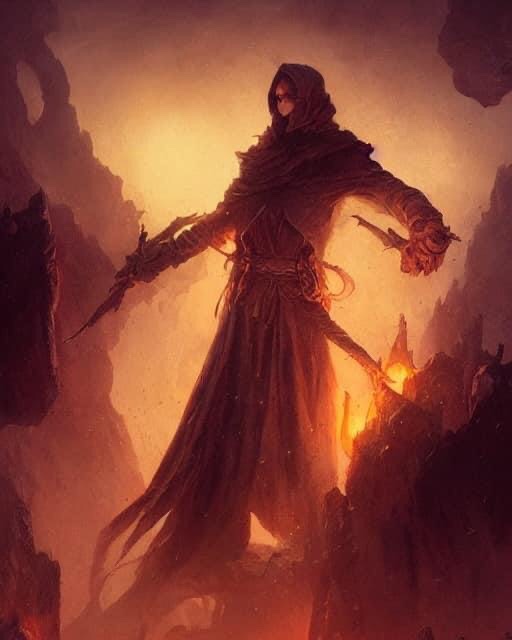Or House of Hades, if you’re American, because your country was founded by people so uptight the English kicked them out. (Thank you, Robin Williams.)
Transatlantic idiosyncrasies aside, House of Heck was, like the previous book, Caverns of the Snow Witch, originally published in shortened form in Warlock magazine in 1984, before being reshuffled and expanded for full publication.
There’s a couple of other noteworthy things about House of Darn. Firstly, it’s the first Fighting Fantasy book where the protagonist isn’t a veteran adventurer (the captain of the Starship Traveller counts), but just some average person. Secondly, that person is from the modern day. Well, the 1980’s, which is the modern day with bigger hair and fewer mobile phones. Thirdly, the illustration for paragraph 264 was excised from some later editions due to the implied nudity of the woman about to get sacrificed to Satan.
Oh yes, there’s that as well. House of Dash It All is a horror story in the style of 1970’s Hammer Horror films, and the cult aren’t worshipping some fantasy world’s demonic pantheon, but the actual, literal, Devil of the Abrahamic faiths, or at least his servants.
Only ten books in and Fighting Fantasy is getting controversial. You can see why the yanks shrunk away from the actual title as well when you bear in mind that this book was published during the hysteria about Dungeons & Dragons leading children into satanism.
Patricia Pulling was an awful person. I mean, she obviously suffered an unspeakable tragedy when her son, a D&D player, shot himself dead, but then she spent the last fifteen years of her life launching or supporting frivolous lawsuits against roleplaying games on the fantasy that the magic in D&D was real, and a curse had caused his suicide. Since she was full of shit and/or extremely unstable herself, whenever she acted as an ‘expert witness’ on satanism in roleplaying games, she was committing perjury. Fortunately, none of those lawsuits were successful, due to courts relying on facts rather than deranged conspiracy theories about a vast underground network of devil worshippers ensnaring vulnerable young people through the medium of dungeon-crawling.
Oh God. Wait… If she’d been alive today, she’d have been tweeting QAnon theories and predicting that the One True President would be returned to office, upon which day his first act would be to lock up all the Democrats for being fans of popular, but not that good, roleplaying systems.
Anyway, the crusade spawned by Pulling’s inability to process her own feelings of guilt over failing to address her son’s obviously deteriorating mental health or prevent his suicide was eventually debunked extensively by author and game designer Michael A Stackpole (I mainly know him from his Battletech novels, as well as the X-Wing series for Star Wars) in his 1989 Pulling Report. Have a read of it when you have an hour or so to spare. It’s comprehensive.
So yeah, that’s the cultural environment into which House of Asshat was released.
I can see the meeting with the publisher now:
“Steve, I’ve just read the first draft of Ian’s thing with the vampire sorceress in a cave. It’s pretty good. What have you come up with for book ten?”
“You’re a lost motorist who takes refuge in a haunted house during a storm.”
“Interesting, and a bit different from the others. I like it.”
“Then you use a letter opener to stab your way through a coven of devil worshippers.”
“Are you sure about that? I mean…”
“And I’ll include the names of real demons in the text, for authenticity.”
“It’s going to be a tough sell, particularly in the US market, but…”
“The final boss is Patricia Pulling.”
“And that’s where the line is, Steve.”
“Also, I want to ritually sacrifice a naked woman.”
“Steve, we’ve talked about this…”
“I can negotiate.”
In all seriousness, with Patricia Pulling making waves, it’s hard to think that this book wasn’t something of a deliberate challenge to her awfulness.
History done, let’s get to the game.
– Stats are Skill 10, Stamina 20, Luck 7 (oh dear).
– In House of Nuts, you also have a Fear stat, which starts at 0 but goes up to a predetermined maximum score (D6+6). I roll a 6, so I can acquire up to 12 Fear points before I *checks notes* die.
– In The Warlock of Firetop Mountain, you can kill a dragon. In this book, you can literally die of fright. These protagonists are not the same.
– Fear is essentially a Call of Cthulhu-style Sanity meter.
– According to the Titannica fan wiki, the optimal path through House of Poo causes you to gain 8 Fear. In other words, you can play the game perfectly but there’s a 1 in 3 chance that you didn’t roll high enough during character creation and just die. That’s a design flaw that should not have got past editing. I prefer my difficulty levels on the lower end (for me, a gamebook is about how you reach one or other endings of the story, not if), but it’s inexcusable to make a book impossible because of a particular stat roll before the story even begins; I can only assume this was an error.
– Although I rolled Skill 10, I start the game unarmed, so am effectively 3 points lower than that during any fights until I find something pointy to play with.
– And no provisions or potions (or setting-appropriate equivalents). This is survival horror. If I had a packed lunch or a Thermos of soup, it’s back in the car.
– The opening paragraph of the introduction makes the modern setting clear – you’re driving through the rain but, like Brad Majors and Janet Weiss, you’ve taken a wrong turn. Let’s hope you don’t end up in a creepy old mansion where the master of the house is having one of his… affairs.
– It’s all the fault of some creepy old guy who directed you this way. You’re rather annoyed at him, but it’s still quite a shock when you run him over twenty minutes later.
– Except there’s no body, my car’s in a ditch and the battery’s dead. Nice suggestion of the supernatural, although since this is the early 1980’s, I’m probably just drunk at the wheel and hallucinated him.
– The book doesn’t specify where these events are taking place, other than naming a town twenty miles back down the road as Mingleford. That could be English, or maybe North American, or frankly anywhere else where some British sea captain once stuck a flag. This fits the setting, though the few Hammer Horror films I’ve actually seen are very British in feel. I imagine that foreign language translations of the book rename Mingleford as something more locally relevant.
– Anyway, I approach the house in the pouring rain, and lightning flashes, illuminating it briefly, and… Damn it, Janet…
– I notice that the light at the window isn’t electric, but probably an oil lamp, but the narrative then breaks POV to point out that I don’t notice that there’s no telephone line going to the house, and if I had then I might have turned back.
– Aside from that immersion-breaker, this intro is pretty good at building atmosphere.
– Unfortunately, the final line harks back to the Rocky Horror Picture Show again: “Tonight is going to be a night to remember…” One of the Criminologist’s lines in Rocky Horror, in similar circumstances, is: “Tonight would be a night they would remember for a very long time…”
– In paragraph 1, I approach the delapidated old mansion, and there are three ways to proceed: rapping on the door knocker, pulling a cord, or creeping around the side of the house to where someone’s turned a light on.
– Well, the obvious thing to do when approaching a house in the dark is to ring the doorbell. Anything else will scare the occupants.
– The butler answers and invites me in after I explain my predicament. “The Master is expecting you.” Wait, what?
– Anyway, the butler leaves me in an incredibly well appointed room while he goes to fetch his boss. I admire the paintings, and one of them only goddamn starts speaking to me! “Stranger, beware this place, for it is cursed! Many have succumbed to its power, myself included. The evil Lord Kelnor will already be plotting your death. Drink not his white wine. Or if you can, begone. Escape while you may!”
– Well that’s weird (and worth my first Fear point). I’m clearly hallucinating. Have I got schizophrenia? And what kind of stupid made-up name is Kelnor?
– In walks Lord Kelnor, the Earl of Drumer. Oops. Maybe I’m not hallucinating. He’s wearing a smoking jacket. Bearing in mind it’s the middle of the night, that means ‘posh person’s dressing gown’.
– Drumer is, of course, an anagram of ‘murder’.
– If his name was actually Kelnors or Skelnor, rather than Kelnor, it would be an anagram of ‘snorkel’, though that would be less sinister.
– The butler’s name, it turns out, is Franklins. This is an anagram of ‘skin flan’, if you take out the ‘r’, and ‘r’ stands for ‘rex’, as in the King of Hell, so his name means ‘King of Hell who wants to turn you into a skin flan’, which is foreshadowing.
– Forget Patricia Pulling; I should be in QAnon.
– My initial objective in this book is to get my car fixed and get on my way. I don’t know if it’s that this book is riffing off the same tropes that Rocky Horror joyfully parodies, or if Steve Jackson spent the late 70’s and onwards going to late night cinema showings while wearing basque and suspenders, but the phrase, “I’ll get you a satanic mechan-iiiii-ic…” keeps cycling through my mind.
– I drink the brandy that Kelnor offers me, and that warm fuzzy loveliness that is brandy in front of a fireplace calms me down enough that I erase that Fear point.
– This is a children’s book in which drinking alcohol is advantageous. Cool.
– Dinner’s ready. Kelnor actually got his cook out of bed to make me a meal. What a generous chap. I have a choice of red or white wine. I think I’ll try the wh… no, the red.
– Lovely wine, this. Proper stuff, not aspirin-drugged supermarket rubbish at all.
– Now I have a choice over whether to have duck or lamb. Are these reheated leftovers, or has the cook actually prepared multiple options for me? A ham and cheese sandwich would have sufficed.
– I pick duck, but in a nice bit of tension-building, the decision doesn’t actually matter. Lord Kelnor and I chat about my unspecified job (for which I have an unspecified appointment in the morning, hence my late night drive through an unspecified area of an unspecified country in the middle of the night), before moving onto his own background.
– His lordship’s lands once spread for miles around, with lots of tenant farmers, but then his sister died at thirty-two, found dead in the woods with strange marks on her neck.
– I wonder if I’ll find some garlic somewhere in this house?
– The peasants started muttering about witchcraft and black magic and the house being cursed and… Wait, ‘peasants’? He calls working class people ‘peasants’? Is the Earl of Drumer hundreds of years old or is he just a Conservative Party MP?
– Actually, if this is Britain, he probably is a member of the House of Lords, and as a landowner almost certainly a Conservative peer.
– Assume the current year is 1984, the year of publication, and although the text doesn’t describe Kelnor beyond him being tall and wearing a smoking jacket, the illustrations suggest he’s in his 50’s or 60’s. If he was born around 1920, that’s still rather late for talk of peasantry, even if tenant farmers were still a thing (academic citation: Downton Abbey).
– My car has windscreen wipers and headlights, but they’ve existed since 1903 and 1904 respectively (thanks, ChatGPT), so if this book’s set at some point in the early twentieth century, Kelnor could be from the mid-1800’s, but there’s no suggestion it’s anything other than the modern day.
– Assuming he’s not supernaturally long-lived, and there’s no indication of that, besides my little psychiatric wobble with the painting, it seems he’s just the kind of person who refers to poor people as ‘peasants’.
– Another selection of after-dinner foods to choose from. For once, the irritating Fighting Fantasy complete absence of any hints as to which decision is the wisest is actually helping in this scene. Are the decisions important? I have no way of knowing unless I take the wrong option. It’s a brilliant way of building tension.
– Spoiler: this choice does matter, but I choose the correct one, and Franklins leads me to the Erasmus room, where I shall sleep for the night.
– ‘Erasmus’ does not, apparently, have any meaning in demonology. It’s likely a reference to the Dutch Catholic humanist and scholar Desidirius Erasmus, who emphasised in his writings the importance of education and critical thinking.
– Rather than go to sleep, I opt to go for an explore. The door is locked. Franklins has gone and locked me in!
– I mean, I’m a complete stranger in a house full of valuables, but that’s still pretty unfriendly, so I wait up in the darkness for someone to come in. This is rather unsettling and I gain a Fear point.
– My patience is rewarded when a hunchback comes in with a bedtime drink. I do have the option of assaulting this person with a stigmatised disability, but instead I sneak past him and lock the door behind me, trapping him in the Erasmus room.
– I’m going to keep track of how many people I kill tonight. Still zero, so far.
– My undiagnosed mental health issues kick in again as a ghost appears and tells me to come into a room at the end of the landing, saying “Thank God I’ve found you in time.”
– Is this a trap? No, it’s just a hallucination and I was going into that room anyway.
– This is the Apollyon room, an ornate bedroom. I’ve no idea how I know the name of the room, but let’s assume there’s a brass plaque by the door.
– Apollyon, incidentally, is a biblical reference, specifically in the Book of Revelation. It’s the king of demonic locusts associated with destruction and torment. The name is Greek and means ‘Destroyer’ or ‘Exterminator’.
– The ghost tells me that Lord Kelnor, Earl of Drumer, is a Black Priest of the Night and yesterday he captured a pretty young district nurse to sacrifice to the Demons of Hellfire. I need to find the Kris knife as it’s his only weakness, and it’s probably to be found in…
– Some ghostly Great Danes (the dogs, not the Vikings) suddenly attack the ghost, presumably how she died, and she fades away.
– I think I need to rescue this damsel in distress, so she can get back to changing the dressings on old people’s abscesses.
– Ah, yes, there are name plates on the rooms. The next two are the Azazel and Mephisto rooms.
– They’re both demons or fallen angels. Azazel is associated with scapegoat rituals (ie offloading a community’s sins onto one volunteer or sacrificial animal), while Mephisto is keen on tempting people, particularly in the Faust legend.
– The Azazel room is an old-fashioned, very cluttered science lab. There’s a skeleton hanging from a hook. Maybe I’m paranoid, but I’m keeping half an eye on that thing. Ooh, a letter opener. I now have a weapon.
– I don’t search the rest of the room, because I get spooked by two voices outside, which then leave.
– I try the Mephisto room next, but it’s empty, apart from a broken window and a length of knotted rope, which I take.
– The next room along is the Balthus room. Aside from the obvious reference to Balthus Dire, antagonist of Steve Jackson’s Citadel of Chaos, Balthus also refers to the French-Polish artist, Balthasar Klossowski de Rola (1908–2001). Balthus was known for his paintings of very young girls in sexually ambiguous or unsettling scenes. To put it politely, his artwork has been accused of being paedophilic. I guess Puffin Books didn’t have access to Wikipedia back in the early 80s.
– The Balthus room is empty apart from a box on the mantelpiece. I try to open the box, but the catch is stiff. Then I get attacked by the curtain, which punches me in the chest and drops me to the floor.
– Oh no, it’s not enchanted drapes. It’s just the reanimated rotting corpse of some bloke.
– I fight the zombie.
– As anyone who’s read Jack Chick’s Dark Dungeon, an insane and notorious Christian tract about the Satanic influences of the titular roleplaying game, and definitely not Dungeons & Dragons, will know, ‘fighting the zombie’ is a thing you can do by yourself, separate from the rest of your roleplaying group. Although the character in the tract is sitting at her mother’s kitchen table during that scene, she’s supposedly locked herself away in a hermit-like existence, leading to the use of ‘fighting the zombie’ as a euphemism for masturbation, as in, “Don’t come in, mother, I’m fighting the zombie!”
– Of course, Dungeons & Dragons is a multiplayer game, and one might ask why Marcie has a GM screen set up on the dining room table.
– “Don’t come in, mother, I’m Fighting the Fantasy!” That’s more appropriate.
– Read Dark Dungeon online here at the official Jack Chick website. There are no adverts, so the more traffic we send to those awful people, the more it costs them. Just don’t buy anything. (Content warning: Suicide, religious bigotry, stupidity.)
– Anyway, I fillet the zombie like it was a letter that really needed opening. It was already dead when I started, so I’m still on zero murders.
– Shame that just being attacked by the zombie netted me two Fear points. Very Call of Cthulhu, but I think I need to find some more brandy.
– The box on the mantelpiece contains the key to let myself out of the room. Turns out the door locked behind me when I entered.
– Back on the landing, I find an unmarked door and go through it, finding myself on a short corridor with a window at one end and the Diabolus room off to my left.
– Holy hallucinatory messages, Batman! I swear, for an evil House of Poop, most of the spooky stuff appears to have been helpful. Apart from the zombie, obviously, and those Great Danes were kind of horrible. “Mordana in Abaddon,” is written in the condensation on the window, with the narrative advising me to turn to a particular paragraph when that message becomes relevant. I’m not normally fond of combination lock puzzles, but this variation is unintrusive and encourages close reading of the text. (Appointment with F.E.A.R. does something similar with its investigatory clues.)
– Oddly, if I look at the window on the short corridor, I’m not given the option to enter the Diabolus room, and if I’d gone into the Diabolus room, I’d lose the opportunity to look at the window. (Having checked what happens in the Diabolus room, I’m glad.)
– Diabolus, incidentally and probably obviously, is Latin for ‘devil’ or ‘demon’, and is usually used to refer to Satan in Christian tradition. I bet you feel educated for that, but I started offering quick (Google-facilitated) insights into the room names, in the hope that they had some relevance to what was inside them (no, basically), so I’m carrying on.
– There’s another unmarked door along the landing, opposite the main staircase down to the ground floor. I go in and find myself in a storeroom. I’m not sure why, considering I’m on the upper floor of the house, but it’s full of crockery and cutlery, including a very sharp meat knife, which I take as a spare weapon.
– Oh bollocks. There’s also several cloves of garlic on the shelf. We all know what garlic means.
– There’s also an unlabelled bottle of white liquid. I’m not going to drink it, but I’m curious about this probable schmuck-bait, so let’s scout ahead. Oh. I expected bleach or floor polish. No. It’s that poisoned white wine I was warned about.
– Describe white wine to me. Ask fifty different people to describe the appearance of white wine. Ironically, the colour white is unlikely to be mentioned. I’m truly mystified by this idea that white wine in House of Buggery is actually as white as red wine is red…
– I leave the storeroom through the door at the back of it (it has two doors, unusually perhaps for what’s essentially a large cupboard, though I suppose it makes it easier for the servants to get things without traipsing around the entire upper floor). There’s another short corridor here, ending in the door to the Shaitan room, and to my right is the Mammon room. On my left is an unmarked door.
– Expecting another storeroom, I try the unmarked door. It’s locked. I try the key I picked up in the Balthus Room (internal doors in a house likely all use the same key, is my logic), but it doesn’t fit, and the book directs me to the page I would have gone to if I’d not bothered trying. Nice little red herring ‘choice’ there. If I hadn’t explored the Balthus room and picked up the key in there, I’d have been kicking myself for not exploring properly. As it is, it’s not possible for me to go through this door (at least not yet). I opt for the Mammon room.
– There’s some boxes in here, and I rummage through them. Ah. I see. ‘Mammon’ is a Biblical concept of material possessions and the pursuit of wealth, often personified in Christian tradition as a demon. Finally, there’s an obvious connection between the room’s name and its function. This is where Kelnor’s family store all of their jewellery. I steal a gold ring rimmed with rubies and engraved with the words ‘From George, to Margaret, 1834’. That year’s going to part of a puzzle, I suspect.
– And, as I turn to another page, I catch a glimpse of the paragraph where that ghostly voice warned me about Kelnor and the white wine. The voice came from a painting of Lady Margaret of Danvers, 1802-1834. George, whoever he is, gave Margaret that ring in the same year she died. I’m not sure stealing it was the best plan ever, but what the hell? What’s the worst that can happen, right?
– The curtains open and shut without anyone else being in the room. Weird. I go and investigate, only to fall over as I try to lean on a bedpost that passes its dodge roll, and then get attacked by an armchair, but pass my own roll to dodge out of the way.
– Yeah, no, not poltergeists, I’m out of here. I flee the Mammon room and head for the Shaitan room instead.
– ‘Shaitan’ is another obvious one, being the Arabic word for ‘Satan’, and is commonly used in Islamic tradition. I wonder if Kelnor ever spends time not acting like a satanist, and invites his friends from the House of Lords over for brandy and coke parties? (Spoiler: this is the 1980’s, so that’s not a reference to soft drinks.) If so, does Lord Mingleford never ask awkward questions about why the bedrooms all have sinister names? Or does he think it’s just an eccentricity, like why Kelnor never lets any of his friends drink the white wine or eat cheese in the house?
– Anyway, the Shaitan room is a large bedroom with a big four-poster bed and, in the middle of the room, a three-piece suite. This is a big room. The door locks behind me, I gain a Fear point, and along comes a disembodied voice. I wonder if my appointment tomorrow morning is with a psychiatrist?
– “So, our visitor is inquisitive, eh? Or are you trying to leave the house? Perhaps your hospitality is not to your liking? Maybe you would like to see some more – shall we say – amusements?” I’m calling it: Kelnor is stood behind the curtain, being weird at me.
– I don’t know why I’m being so sceptical about the supernatural. So far, I’ve seen several ghosts, not seen a poltergeist, read some haunted writing, and stabbed up a stinking, decomposing, reanimated corpse.
– Oh, there’s actually nothing supernatural going on. It’s not Kelnor, but a bloke sat in a high-backed armchair that was facing away from me. Perfectly normal.
– How did he know I was who I was though? He’s a bit pale, isn’t he?
– Yeah, the vampire-garlic symbiosis strikes again. I whip out my vegetable and wave it at the pale guy who most definitely isn’t non-supernatural. He backs off towards one of the two doors at the far side of the Shaitan room. I throw the garlic at him (WHY?) and get there first. It’s a cupboard, but the back panel has been slid aside to reveal a secret passage. Cool.
– That was the third or fourth encounter with a vampire in the Fighting Fantasy series so far and, although brief and non-fatal, it was fun. There were numerous instadeath choices available, and if I’d picked the other door, I’d have been attacked by a pair of zombies. You can even wear the ring you find in the Mammon room, which is bad idea, since it makes it easier for the vampire to hypnotise and then kill you.
– This vampire is presumably George. He gave the ring to Lady Margaret of Danvers back in 1834, and used it to kill her.
– The vampire survived the encounter, so I wonder if I’ll meet him again. For some reason, he doesn’t follow me. Probably picking garlic out of his hair.
– There’s a small room partway down the secret tunnel that has a weird mystical haze hanging on the wall, ‘almost like a curtain of sparkling water’. Oh, yes, I’ve got one of those at home and this looks just like that. I stick my head through it and it turns out I’m peering out of a mirror into a reception room. I can hear voices, so I duck back into the secret room until the coast is clear, then step out into the reception room.
– The thing this book does very well is keep you aware that you’re being stealthy. You’re aware you’re in hostile territory from the moment Franklins locks you into your bedroom (and earlier, really, if you consume the wrong things at dinner). If you see or hear people coming, you often get the option of trying to hide, and every choice about whether to fight someone is in the context of you’re just ‘some bloke’ (or lady – I’ve not noticed any gendering when other characters have been referring to me).
– Oh, FFS, Kelnor’s ancient. I’ve just pieced it together. His sister died with marks in her neck at thirty-two, which is the same age at which Lady Margaret of Danvers was killed by George the vampire. Kelnor keeps his sister’s murderer living in the house. That’s a weird thing to do.
– I suspect that the ghost I met earlier was Lady Margaret, but in that case, where do the Great Danes come into it? Did George set the dogs on her, or are the ghostly hounds some sort of defence mechanism of the house, keeping the resident spectres in line?
– Wait, why is there an illusory ‘mirror’ not-actually-hanging on the reception room wall? What’s its purpose?
– I leave the reception room and find my way through the darkened hallways to the kitchen. The back door is right there. The keys are sat on the cooker. I could escape from the House of Poomchukker right now, if I wanted to. However, there’s an NHS employee somewhere in this house, about to get sacrificed to Satan. I can’t really leave her here, can I?
– There’s a neat little trap in this room, that again plays on the fact that this entire book is a stealth game. Try the door? It’s locked. Hmm, maybe you should pick the keys up off the top of the cooker? The hob’s very hot and the keys burn your hand, causing you to scream. You can test your Luck to see if it was your off-hand, rather than your weapon hand, to reduce the Skill and Stamina damage suffered, but it doesn’t matter either way. That scream sealed your fate: four cultists arrive to investigate the scream. Outnumbered, you surrender and are dragged down to the cells in the basement. It’s not an instadeath as such, but it’s still a game over, and who knows how long you’ll live afterwards?)
– I mean, I reckon the danger of the keys could have been flagged up a little more. They’re described just as being on top of the cooker. Maybe specifying that they’re lying on one of the electric hobs is a little fairer.
– I enter the pantry instead. Who the hell left a ghoul in here? I fight it, I kill it, and it falls over onto a stack of pans…
– And those four cultists turn up and drag me off to the cells for a game over.
– Wow. Really? The entire kitchen of the House of Drumer is a dead end. If you enter, you will end up getting dragged off to that cell in the cellar.
– House of Bumholes is an old-school horror movie, right?
– I pick up the remote control for the VCR and press Rewind…
– I leave the reception room and find my way through the darkened hallways to the door opposite the door into the kitchen, which for some reason I’m averse to entering. I need a key to get through this door. Without the key, I decide to enter the kitchen instead…
– (Doing some five-finger-scouting, it turns out that that key was from a locked room in the secret room with the magical mirror into the reception room, which I didn’t have the Golden Key to enter on this playthrough. Inside the room opposite the kitchen, you confront Kelnor and Franklins. So, by fleeing from George the vampire into the secret passage rather than back out onto the landing, I skipped a large part of the house, and ended up at a finale I was completely unready for. Also, the key that I didn’t have has a number inscribed on it, which you subtract from the paragraph reference you’re on. It’s not quite a combination lock puzzle, but I’m not entirely sure how I feel about it. I’ll think about it.)
– For now though, I press Rewind again…
– I whip out my vegetable and wave it at the pale guy who most definitely isn’t non-supernatural. He backs off towards one of the two doors at the far side of the Shaitan room. I throw the garlic at him (WHY?) and run for the door back to the upstairs landing.
– It’s locked.
– And I have no garlic left.
– Balls.
– George kills me.
– Rewind…
– (Incidentally, Edge of Tomorrow is an excellent film. Think Groundhog Day, but with Tom Cruise getting shot in the head more often.)
– Yeah, no, not poltergeists, I’m out of here. I flee the Mammon room and run down the landing, past the Asmodeus and Eblis rooms, stopping to try the door of the Tuttivillus room.
– Asmodeus is a demon from Jewish and Christian traditions, usually associated with evil and temptation. In Christianity, he’s a Prince of Hell. In Judaism, he’s a king of demons with a fondness for tempting people into sexual immorality (so he’s clearly not all bad).
– Eblis (or Iblis) is a figure from Islamic tradition synonymous with Satan. He was a jinn that refused Allah’s command to bow down to Adam, and was cast out of Paradise. Ever since, he tempts people into sin.
– Tuttivillus is a flavour of Italian ice cream.
– No, actually, he’s a minor demon or imp found in medieval Christian folklore, who hangs around in churches(!), making a record of any mistakes made by the clergy during services. He then snitched on these erroneous vicars to higher-ranking demons. He was a cautionary tale, basically, to get people to pay attention during religious rituals.
– It’s a bedroom with barred windows. Cosy. Actually, the bed looks very inviting. The book asks me if I want to go to sleep. Considering what happened last time I was shown to a bedroom, no. I look out of the window instead, for some reason.
– Gah! +3 Fear points for seeing an old man. A bit steep, but then it is the one that gave me crappy directions, who I then ran over twenty minutes’ drive later, and is now swinging by the neck from a tree, as a long-dead corpse. I’m on 8 Fear now, and am still on the upper floor of the House of Boobies. Only four more points, and I’ll have a heart attack and die. I run out of the room, round the corner, and face three doors: Belial on the left, Abaddon on the right, and an unmarked door dead ahead. I start with the Belial room.
– Belial is a Judaeo-Christian demon associated with treachery and rebellion, and is generally regarded as being wicked and lawless. Conversely, in Warhammer 40,000, Belial is a Dark Angels Chaplain, hunting down the traitorous Fallen.
– It’s a study, but the furniture is all covered in sheets. I take a breather and regain enough Stamina to take me back to my maximum. Small mercies. Then one of the sheets begins to rise up into the air, as if being pulled up on string, and I gain a Fear point.
– I grab the sheet and… Oh. It was actually being pulled up on a piece of string. That’s okay then; erase that Fear point. But… who was pulling it up on string? Rather than find out, I leave the room.
– For some reason, I no longer have the option of going through the unmarked door, so I go into the Abaddon room.
– Abaddon is a Hebrew word meaning ‘destruction’ or ‘place of destruction’, and is portrayed in Jewish and Christian tradition as either the place or as an angel or demon embodying destruction. He’s also a Chaos Space Marine with a very big sword, very short temper, and very small arms.
– There’s an old woman asleep in the Abaddon Room. For some reason, I decide to wake her up. This is a bit tricky, as she’s actually stone cold dead. (And now I’m up to 10 Fear points. I’m doomed.) Then she wakes up and stares at me with pure white eyes, asks how dare I walk into the bedroom of the lady of the house, and tells me to go away and leave her to die in peace.
– Wait, this is the lady of the house? Is this Kelnor’s wife?
– I ask her questions about the house. After all, she’s hardly likely to pose any kind of… A wooden panel opens and a pair of Great Danes bound into the room to savage me. (Do they live in a secret compartment in the wall, because that’s not the usual habitat of canines?)
– I stab to death a pair of animals with a letter opener. Still on zero murders, so long as you’re not PETA.
– The old lady keeps hurling threats at me while I search the room for… what? Anything interesting, I suppose. I notice that she gets rather agitated when I approach her herb garden near the window. Since I was attacked by a pair of her very large dogs, I don’t feel so bad about bullying a helpless old (dead) lady, so threaten to destroy her plants if she doesn’t tell me what she knows. She still refuses, unless I can tell her her name.
– Why? Has she forgotten?
– I don’t get this puzzle. I’ve got the answer, courtesy of some condensation on a window, but why is the key to getting her to answer telling her her name?
– Oh crap.
– This woman, Mordana, is the lady of the house. [SPOILERS TO FOLLOW] Kelnor is not the master of the House of Butts. This must be Franklins’ wife, and therefore she’s probably a demon. How do you control demons? By knowing their true name.
– I ask her about secret rooms in the house. I hit paydirt. She tells me about the Master’s most secret hiding place and how to get into it. (By subtracting ten from the paragraph reference when I’m in the appropriate location.) However, I’ll need the new password, and Mordana doesn’t know it. Shekou does though. Oh good, who’s… This possible demon has fallen asleep again. Maybe she is just an old lady after all.
– Having now explored most of the rooms upstairs, I decide to head down the main flight of stairs to check the downstairs. Looks like I’m going to avoid encountering George this time.
– At the bottom of the stairs are two doors. The one to the right is actually, from the map I’ve been using, an alternative door to the room where you confront Kelnor and Franklins later in the book. It’s locked. Instead I go into the opposite room, as the alternative was to go out of the front door, and I’m not actually trying to escape. Remember, this is a rescue mission for that district nurse (who never even gets a name, if I recall).
– Also, from a previous time I’ve played this book, there’s a +3 Fear jump scare behind that front door, and that’ll be enough to kill me at this stage in the book.
– The drawing room is unoccupied, so I loot some silver ornaments, specifically a short dagger and a hip flask, which I fill with brandy. Behind the carriage clock are some letters belonging to the earl, including one from another Satanist, Count Pravemi, who has recently survived a raid on his home, and suggests Kelnor improves his own security. Pravemi says he knows the password to Kelnor’s secret cache is ‘Goathead’ and suggests he changes it to ‘something which will remind you of the sound advice of a good friend’. So, the new password’s ‘Pravemi’ then.
– While I’m searching the room, the fireplace bursts into life in a very literal way, and two fire sprites leap out and advance on me. How do I know that these are fire sprites? Sprites don’t exist in the real world, so why am I giving them that name? Anyway, I back away – can I even hurt them if I stab them? They’re living flickers of flames, for Christ’s sake. So I pick up one of the many potted plants in the room and hurl the contents at the sprites, smothering them under a load of wet soil.
– Weirdly enough, despite these arguably being the most obviously supernatural creatures I’ve faced, they’re not worth even one Fear point. I mean, fire is scary, and fire with faces and that chases you around the room is just plain terrifying.
– I leave the room hastily, and find myself in the study. Writing starts appearing on the sheet of paper on the desk, costing me another Fear point. Damn, I’m at 11 out of 12 now. My heart rate is pounding. The writing says, ‘Find Shekou’.
– I’m trying to, goddammit. He knows the current password to the earl’s special room.
– Are all these supernatural hints the work of one ghost, or are there a whole bunch of dead people cursed to haunt the House of Wank, and who are all taking whatever opportunity they can to help me? The implications of that are interesting. Are the ghosts picking me in particular? Or did the district nurse who came over to trim Mordana’s ingrowing toenails find ‘Don’t eat the cheese,’ written in blood on her notebook?
– I look through the bookshelf and find Mystical Symbols and Their Part in Magical Rituals. This is, presumably, a book about mystical symbols and their part in magical rituals. Oh, no, it’s actually a hollowed out container for a pentacle that has power over devil worshippers. Cast into the metal of the pentacle is a potent number related to the Devil himself: 66!
– Pardon?
– 66!
– That’s not related to the Devil in any way.
– Well, no, but there’s only 400 paragraphs in this book, so we’re dropping the third ‘6’.
– Fair enough.
– I pick up another book, on medieval portraiture, and spot a button on the wall behind it. At this point, I get the choice between pressing the button, or keeping the very valuable book. If I press the button, it opens a secret door. I can then choose to explore that passage or leave the room via the other door, without taking the book. Why can’t I both go down that secret passage and take the book with me? This is a flaw/oddity/strange design choice that occurs frequently in this book.
– House of Farts is an unusual Fighting Fantasy book in that it’s technically a dungeon crawl, but through a realistically laid out building, and one that’s significantly smaller than, say, Craggen Rock from The Citadel of Chaos. You can take several routes through the house (as my VHS rewinding earlier demonstrates), but there’s not the freedom of a video game to walk wherever you want to, whenever you want to.
– The logistics of making the gamebook work like that would be quite intimidating, particularly when you bear in mind that there are NPC’s also living in the building, but I think it could be doable with codewords to indicate certain events have occurred, and a Scorpion Swamp style ‘If you have already explored the Abaddon room, turn immediately to page x’ when you enter that location. At the time House of Knickers was written, gamebooks as a genre weren’t that advanced.
– I follow the passage, which gradually becomes a staircase down to the cellar. (No, this isn’t the staircase with Kelnor’s secret cache room – I checked.)
– Instead, this is the house’s dungeon, with four cells, three of which are occupied. I assume the fourth one is the one that you get put into when you make too much noise in the kitchen. The occupants of the other cells are a pretty young girl who begs to be released, a tall man who asks you to kill him so that Kelnor is deprived of the opportunity, and a balding man in a grey gown who doesn’t say anything.
– Incidentally, the illustration for this page depicts them all being in one large cell, or charitably three very narrow cells.
– I’ve not really mentioned the illustrations in this book. I’m not sure why, because there are some real corkers in there, courtesy of Tim Sell. The double act of Kelnor and Franklins appear in two, one when you first meet them, and one where you confront them for the finale, and the difference in demeanour bookends the story nicely. The various other inhabitants of the house (living and dead) are characterfully illustrated, and are all pretty damn sinister. There seems to be a family resemblance between Kelnor and George the vampire, although that’s probably coincidental, as George is implied to be Kelnor’s brother-in-law.
– But, you know, aristocrats and gene pools…
– Interestingly though, despite this house being the home of an earl with apparent aristocratic rulership of the surrounding area, not one of several illustrations show a typical British or European stately home of any era, instead leaning more towards an American colonial/plantation style of mansion, right down to having a covered veranda around the front door, from which the master of the house can survey his land/enslaved people. The version on the front cover appears to be made of bricks, but the internal illustrations are that kind of wooden clapboard popular in North America but rarely seen in Europe (the UK at least) in anything larger than a garden shed. The Addams Family are more likely to live in that house than Lord Kelnor, Earl of Drumer.
– Back to the cells. This is a discreetly dangerous room. One of the three prisoners is useful, telling you that you need to find the Kris knife in order to defeat the evil in the house. One of the prisoners murders you. One of them is a hysterical district nurse. Success! Unfortunately, I have no way of opening the cell door. Suck! You only get the chance to speak to one of the prisoners before you have to leave, or else you get grabbed and take up (brief) occupancy of the fourth cell.
– Ooh, this house has its own torture chamber and even a torturer on staff. I wonder if he’s listed as such in the house accounts, or whether he’s officially a gardener or kitchen hand. Now starts a fun memory game, as you try and convince the torturer and his team of pain technicians (Orville and Dirk) that you’re actually a friend of the earl and could you please untie me from the rack right now, pretty please?
– Remember all those room names upstairs? I hope so, because otherwise you’re going to fail this test and become a good few inches taller and significantly deader.
– The letters are D, A, K, M, S.
– My answers are Drumer, Abaddon, Kris (dammit, why did I not think of Kelnor?), Mordana, Shaitan.
– I scored an excellent 21 out of a maximum 25. For some reason, the points you score for each word are spread across five paragraphs, rather than just listing them all in one paragraph. I guess it keeps the tension ratcheted up.
– Speaking of tension and ratchets, I’m still being stretched on a rack, so if you could… Thank you.
– I coldly leave the torture chamber, and get scared to death by bats.
– Not zombies. Not a corpse flopping out of a cupboard or hanging from a tree. Not a knife-wielding cultist at the front door. Not a ghostly apparition or even just a feeling of anxiety while waiting in a darkened bedroom. I suffer a fatal heart attack after a flying mouse lands on my head.
– No, I don’t. Ignore it and keep going. Fear 12 is where the wimpy motorists get sorted from the badass vigilante action heroes.
– Anyway, like a badass, I hide under the cellar stairs until the bats go away.
– Under the cellar stairs… Hmm…
– I trace the outline of a secret door and the book gives me a choice of four passwords to get through it. ‘Goathead’, Kelnor’s old choice of password, is one option, and ‘Pravemi’, the name of the friend who told Kelnor to change it, is another. Other options are ‘Murder’ and ‘Kris’.
– Obviously it’s not ‘Goathead’, since Count Pravemi told Kelnor that he knew it.
– It’s not ‘Kris’. We know this, because ‘Kris’ is derived from the Greek for ‘Christ’, and the thing in the room is the Kris knife. Kelnor’s not an idiot and probably has an aversion to the word anyway.
– Hilariously, the password isn’t ‘Pravemi’. Despite that being the obvious choice if you’ve read the letter, but not yet got the actual password off Shekou the hunchback, again, Kelnor is not an idiot. What he is, though, is the kind of bastard who doesn’t appear to mind if his sister gets eaten by his vampire housemate.
– I say ‘murder’, and the door opens.
– Count Pravemi is most likely in a shallow grave somewhere, with his heart ritually removed. Probably his tongue as well, the nosey, blabber-mouthed fool.
– I enter the actual secret room and find the Kris knife. And this is where this book gets problematic.
– You see, the Kris knife is described as pearl-handled with a wavy silver blade. The inscription on the box reads: The Kris Knife. A blade fashioned for the glorification and pleasure of the Demons of Hellfire – our true Masters. To be used only by Initiates. Never to be wielded in the presence of the Masters.
– So, what’s up with that?

– That picture, borrowed without permission from eBay (it’s on sale for $2500, if anyone’s interested), is an Indonesian kris knife. The kris is a real-world part of Indonesian culture, with its own mythology and mystical associations, and Fighting Fantasy just recast it as being a sacrificial knife used by devil worshippers to glorify their demonic masters. It even has the same wavy blade. Not cool.
– You know what is cool? That UNESCO awarded the kris the status of Masterpiece of the Oral and Intangible Heritage of Humanity in 2005.
– Anyway, back to the 1980’s, when that kind of cultural appropriation was ‘fine’.
– I ascend the stairs to the ground floor and find myself in a reception room with a large mural of a country scene on one wall, and a mirror… hang on, I’ve been here before, in another life, but from the other side of the mirror. When you look at the mirror from this side, you gain a Fear point due to the shock of not having a reflection in the illusory mirror. I go through. Unfortunately, I still don’t have the Golden Key (not my capitals) required to open the right-hand door in the chamber behind the mirror. I think, at some point, I’m going to end up in the kitchen again…
– For now though, I search the reception room and find a leather box hidden under the table. Nice. I didn’t see that last time. Someone’s coming! I’m given the option of hiding behind the curtains or ducking through the illusory mirror. Picking the curtains results in you being discovered as the approaching figures are looking for the very box you’ve just picked up. In a brief moment of hilarity, you are described as sheepishly holding the box and given the option of handing it back to them. Then the comedy ends and you’re plunged into a knife-fight to the death with one or both of them. Instead, I dive through the mirror.
– The writing of this book is quite elaborate. Essentially, you as the character follow a series of potential paths through the book, with circumstances or occasional (annoyingly arbitrary) author fiat meaning that you don’t try certain doors/routes. Think of it like a rail shooter video game, in which you are propelled onwards without full control of your journey, with how you deal with the environment and its threats as they pass you by being the interactive element. As is demonstrated here, sometimes those routes overlap each other or even have you travelling in the opposite direction along the rails.
– This entails moments like this, where the reception room is written twice, once as if I was entering through the mirror, and once where I enter from the corridor that leads off from the entrance hallway. I’m not sure how Steve Jackson went about it, but if I were planning this book, I’d map the entire house out before I started writing, with intended paths drawn on that map. Rooms and corridors would be described in notes, rather than when I reached the appropriate paragraph of the story, so that if the protagonist visits somewhere more than once, I’m consistent about the building.
– Actually, that’s not quite accurate. What I’d do if I was writing House of Flamin’ Nora is make it more free form, allowing the reader more agency to explore the house as they like. Not quite sure how I’d facilitate that, in a building as complicated as the House of Drumer. Maybe use Scorpion Swamp-style nodes, but probably not laid out in a grid pattern. Perhaps even have randomly-occurring encounters with plot-relevant entities (essentially scripted ‘wandering monsters’) that are possibly triggered when you enter an otherwise NPC-free room.
– I should give it a try at some point.
– Awesome. This leather box contains the Golden Key that I need to open that door right there, that I couldn’t get through on the play-through in which I came down from the vampire’s room.
– I open that door right there, and find an iron key with a number cast into it. That would be the key I need to get into the room opposite the very dead-end kitchen.
– Now, how to actually get there? I know the route, out-of-character, but which rail am I riding on now?
– Oh, simple enough. I can either go down the stairs in the secret passage from George’s room (though not up – presumably the vampire encounter isn’t written to be played from that direction), or I can head back through the mirror and into the entrance hallway, which sets me on the rail that leads towards the kitchen/locked door choice.
– I opted to go back through the mirror, but decided to check out what was in the other direction, for the purposes of review. In summary: you encounter a chamber of 40 cultists. If you stick around and watch, you see the high priest kill the district nurse and get a brief but grotesque description of the coven rubbing her blood all over their bodies. If you escape from this room alive, you can find two cells containing out-of-favour members of the cult, one of whom turns on you in order to get back into favour, and then you find a room with three Great Danes, before finally being captured by the coven. That entire series of encounters is a dead end that puts the kitchen sequence to shame.
– Interestingly, one of the prisoners gives some quite specific details on how you can complete the book, although he gets a key fact wrong. Not that it matters, since you’re doomed anyway.
– Also, that pentacle that I found, where you turn to page 66 to control devil worshippers, is used if you accidentally alert the ritual. It’s also useless, since you’re on a doomed path. The dead-endedness of this sequence is somewhat peculiar.
– That human sacrifice scene has an illustration that was removed from some later editions. It’s this one:

– The most naked person to appear in a Fighting Fantasy book, I believe. A bound and naked woman isn’t really kiddy-friendly, I guess, although since the rest of the book has illustrations of corpses falling out of cupboards, old men hanging from nooses and that +3 Fear monstrosity that’s standing at the front door. I presume the later editions still describe how this poor woman gets ritually murdered and her killers smear themselves with her blood.
– There’s a discrepancy here that makes me think that the brief to the artist wasn’t quite comprehensive. The woman on the altar has long dark hair. It’s actually the same woman, the district nurse, who you can find in the coven’s cell block. In the illustration for that room, she appears to have a lighter bob and looks, well, less woman and more child. The text for the cells describes her as a ‘pretty young girl’ and explicitly says she has dirty fair hair. Her identity as the district nurse, and not actually a child, isn’t revealed until you try speaking to her.
– This, people, is what happens when you refer to women in their twenties, who have earned their nursing degrees, as ‘girls’.
– I also think it would have been nice if she had a name.
– Anyway, back in the main continuity of the story, I have the cast iron key, so I can get into the red room. (Not the one from Fifty Shades of Grey – I’m about to confront a completely different wealthy psychopath with a love of tying up naked young ladies.)
– The room’s empty, but there’s a bell-pull for summoning the butler. (The butler gets summoned? Hmm…) I get the option of searching the room, in case of traps. This involves testing my Luck. If I’m lucky, I don’t find anything. If I’m unlucky, I don’t find anything. But it builds atmosphere, right? As a reader, you wonder what would happen if you had the opposite result, and what it is you’ve missed seeing. Also, you’re down 1 Luck point for the final fight.
[SPOILERS TO FOLLOW]
– I ring the bell and Franklins appears, looking surprised to see me. I demand to speak to ‘the master of the house’, so he goes and gets Kelnor. For some reason, I explain to Kelnor that I know what’s going on in the house and I’m going to put a stop to it. The two of them advance towards me, splitting into a pincer movement around a table. I have to choose which man to murder.
– I’m not sure where in the book it is that you find out the identity of the actual Master of the House of Eckythump, but I’ve missed it on this play-through.
– The butler did it.
– In video games, and also in Fighting Fantasy books that have simultaneous combats (I don’t recall seeing any of those in this book), when confronted by multiple opponents, I usually find that killing the weakest one first is the best strategy, as it reduces the amount of incoming damage. In this circumstance, if I lunge at this elderly man, stab him up, and by the time Kelnor reaches me, I’ll only have one opponent to fight. Alternatively, if I took on the fitter (if not actually younger, thanks to him being from at least the 1830’s) earl, I might still be fighting him by the time Franklins stabs me in the back.
– That’s my excuse for targeting Franklins first, and I’m sticking with it.
– Franklins actually pulls away as I approach him. That’s a surprise (not in-character, but because of what the butler is shortly to be revealed to be). Kelnor even yells, “Move in, man! Step up and attack!” Which is a wonderfully upper-class bit of dialogue, straight from the playing fields at Eton.
– I corner the old man in, appropriately, the corner, and engage him in combat. Skill 8, Stamina 8. Not a wimp, but not a serious challenge either. The first time I hit him though…
– He screams, then scowls at me and transforms into a towering Hell Demon with Skill 14, Stamina 12, and I have to fight that bastard to get to paragraph 400. Fortunately, I have the Kris knife, the only weapon that can actually harm it, and that grants me a phenomenal +6 Skill.
– There’s some controversy over whether that’s meant to be in addition to the Kris knife being a weapon and thus cancelling out the -3 penalty to Skill that you start the book with. Weapons in House of Hell are supposedly all described in the text with the word ‘WEAPON’, but the Kris knife isn’t.
– Anyway, that +6 Skill is a great help in what’s basically an attritional fight against an otherwise impossible opponent who is trying to make a skin flan out of you.
– Paragraph 400, to avoid twist spoilers for anyone flicking forward out of idle curiosity, mentions that my other attacker (Kelnor) is still alive and rushes over to hug the dead demon. I resist the urge to kill him, partly because the demon several candles out of the room’s chandelier when it fell, setting fire to the curtains. I flee the house, leaving Kelnor behind, and watch the house burn down from a safe distance.
A fitting end, you think, for a house of hell.
Paragraph 400.
– The illustration for the final page features the house ablaze, with ghostly human faces visible in the smoke. This isn’t described in the text, but is presumably the innocent souls haunting the house being released.
– You may have noticed that I’ve completed this book (albeit with 16 Fear points and about four presses of the Rewind button), without having killed a single human being. Technically, it was the demon that started this fire that presumably kills Kelnor, Shekou, George, Mordana (if she wasn’t already dead), the district nurse and her two cell mates (remember, in a successful play-through, you don’t see her die in the ritual), at least two other prisoners that you meet elsewhere in the house, a whole bunch of Great Danes, and forty devil worshippers having a party in the basement.
– I mean, I could have called the fire brigade, but, well, there’s no telephone line leading to the House of Drumer, is there?
– Final thoughts: House of Hell is a brilliant entry in the Fighting Fantasy series. It’s tense, claustrophobic, and playing a regular Joe/Jane rather than than the usual trained adventurer puts the reader in a very different mindset. This book rewards avoiding combat, with you regularly hiding from threats instead of engaging them in battle (even if allows that option). There are very few ways to regain lost Stamina, so every fight is potentially a source of handicap for the rest of the book, just as it should be in a horror game.
– It’s a shame that the final encounter, aside from the twist about who the true Master of the house was, was a straight combat, even with a fancy magical dagger. Sure, make the Kris knife vital, but the series has already given us complex boss fights against Zagor, Balthus Dire, Zanbar Bone and the Snow Witch, and the brief pursuit and stabbing of an elderly man doesn’t really match up to those.
– The extensive dead-end sequences are also a bizarre design decision. There are useful bits of information to be gleaned from characters encountered in those sequences, as well as the horrific rug-pull of being forced to watch the district nurse you’ve probably been hoping to rescue being murdered in a truly ghastly fashion, so why make it something that won’t be seen by a player following the One True Path? I guess Steve Jackson likes his books to be replayable, but my own feelings are that you should always be able to find a route to 400, unless you’re exceptionally foolish or unlucky.
– Overall though, I love this book.
– Next time, it’s book 11, The Talisman of Death, in which you play another regular Earth-person, albeit in a fantasy world that isn’t Allansia, and the VHS Rewind button is implemented as a feature.
– As usual, here are some images, generated using StarryAI, inspired by House of Hell.
